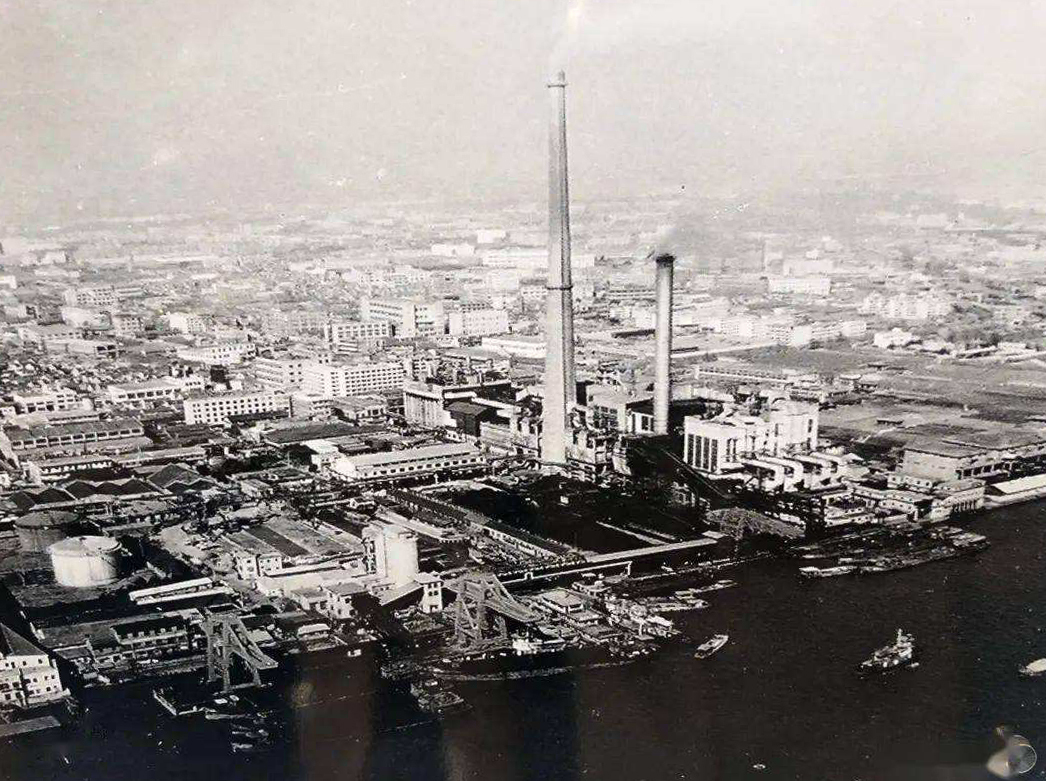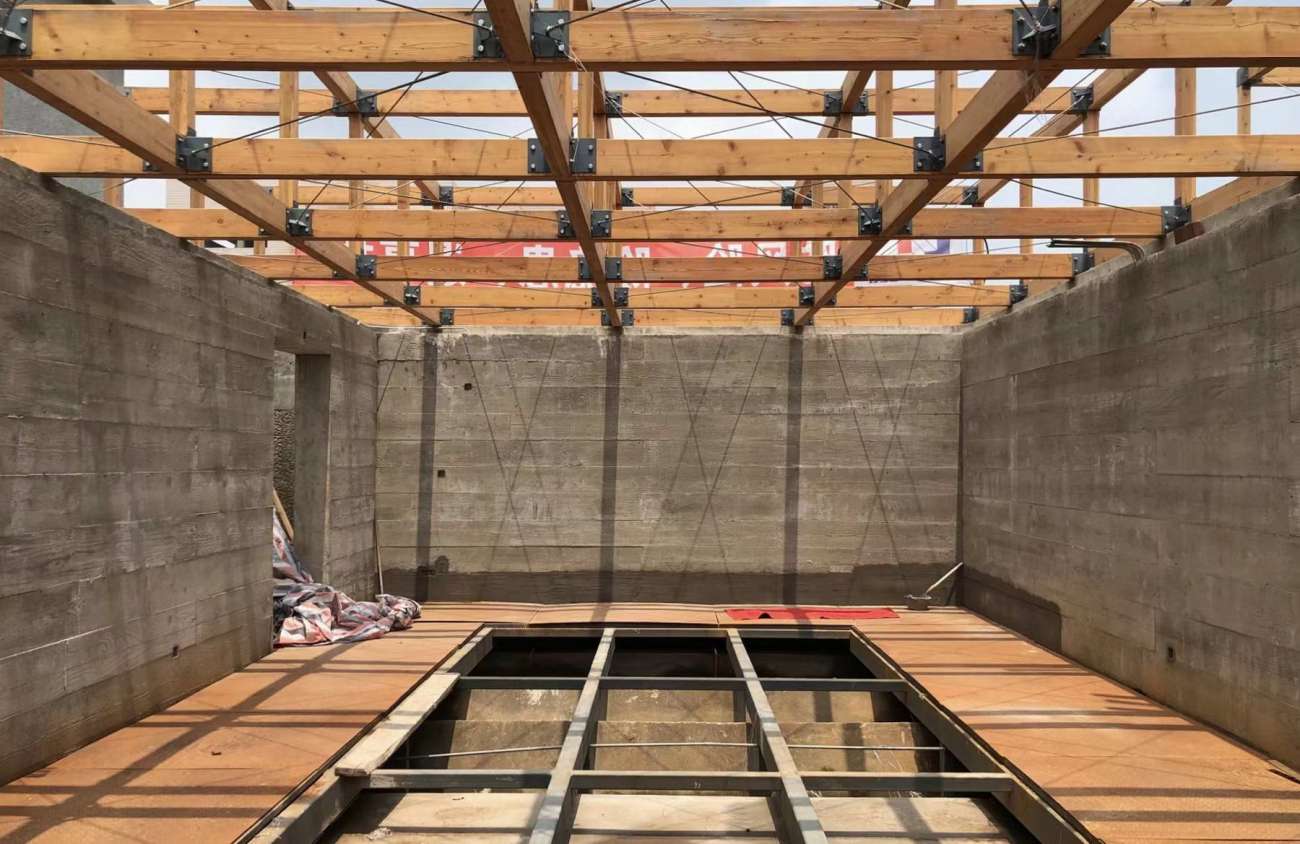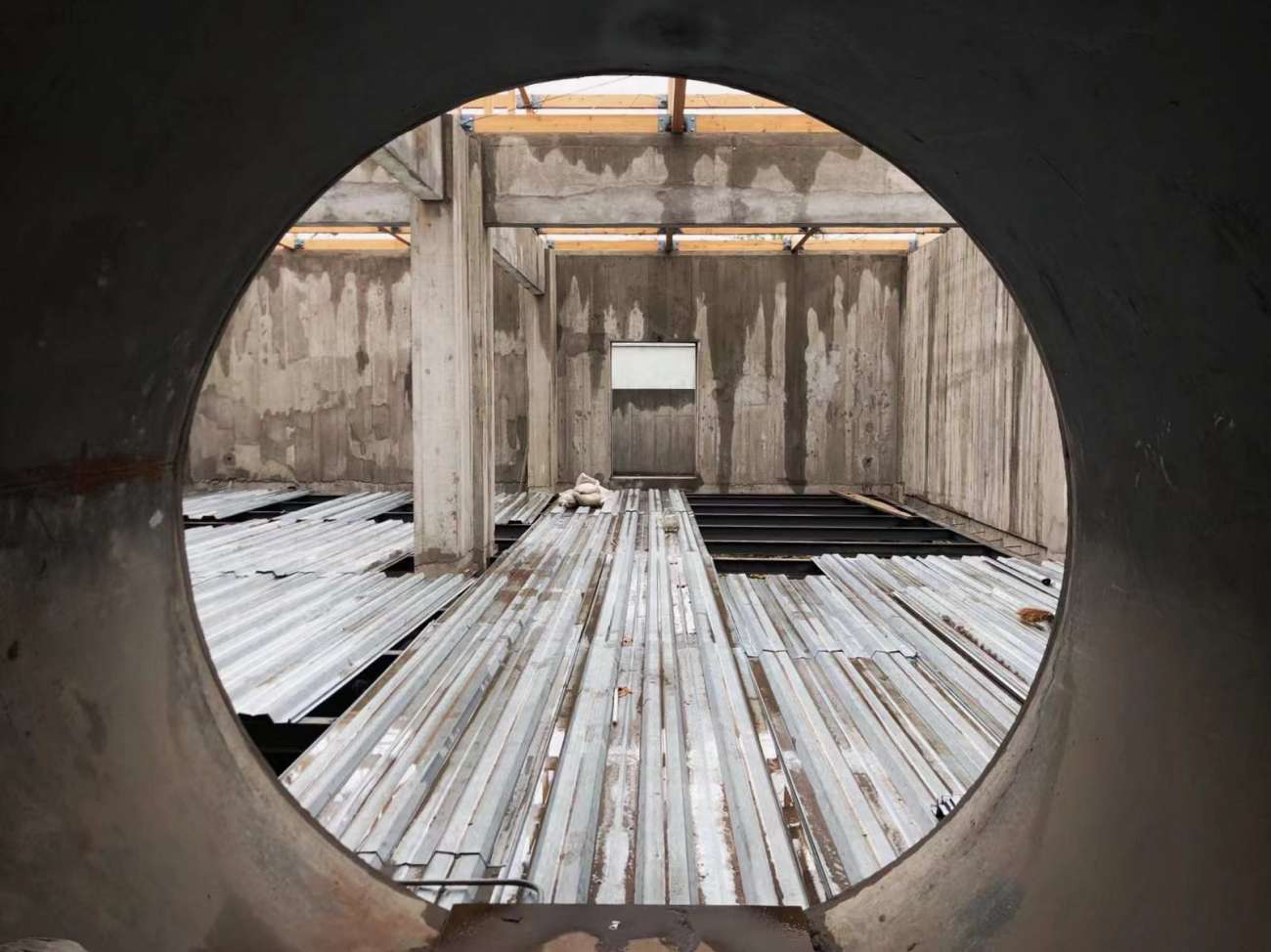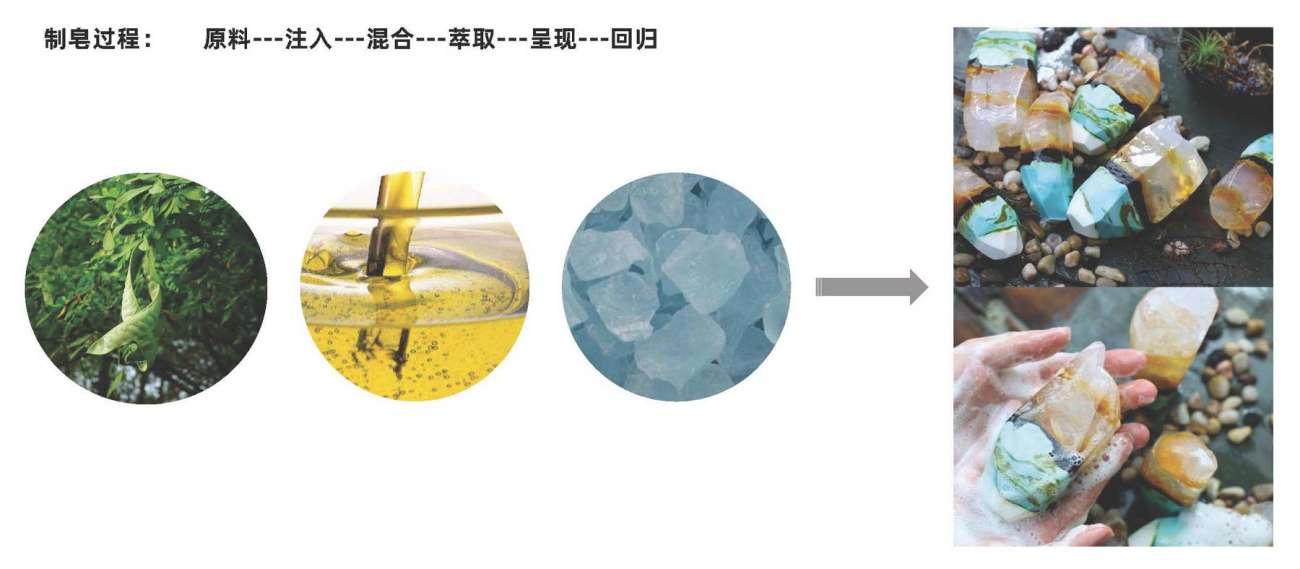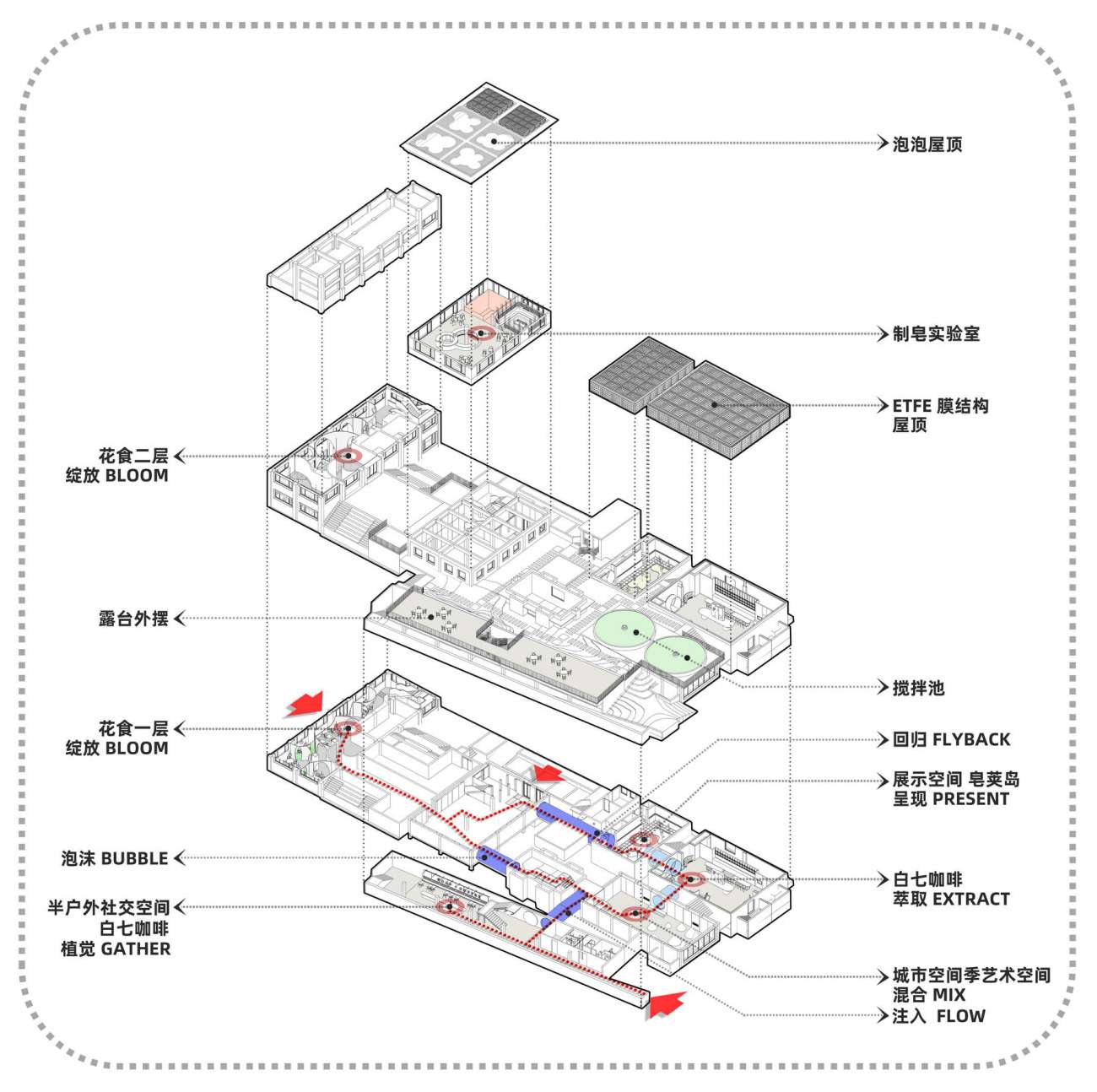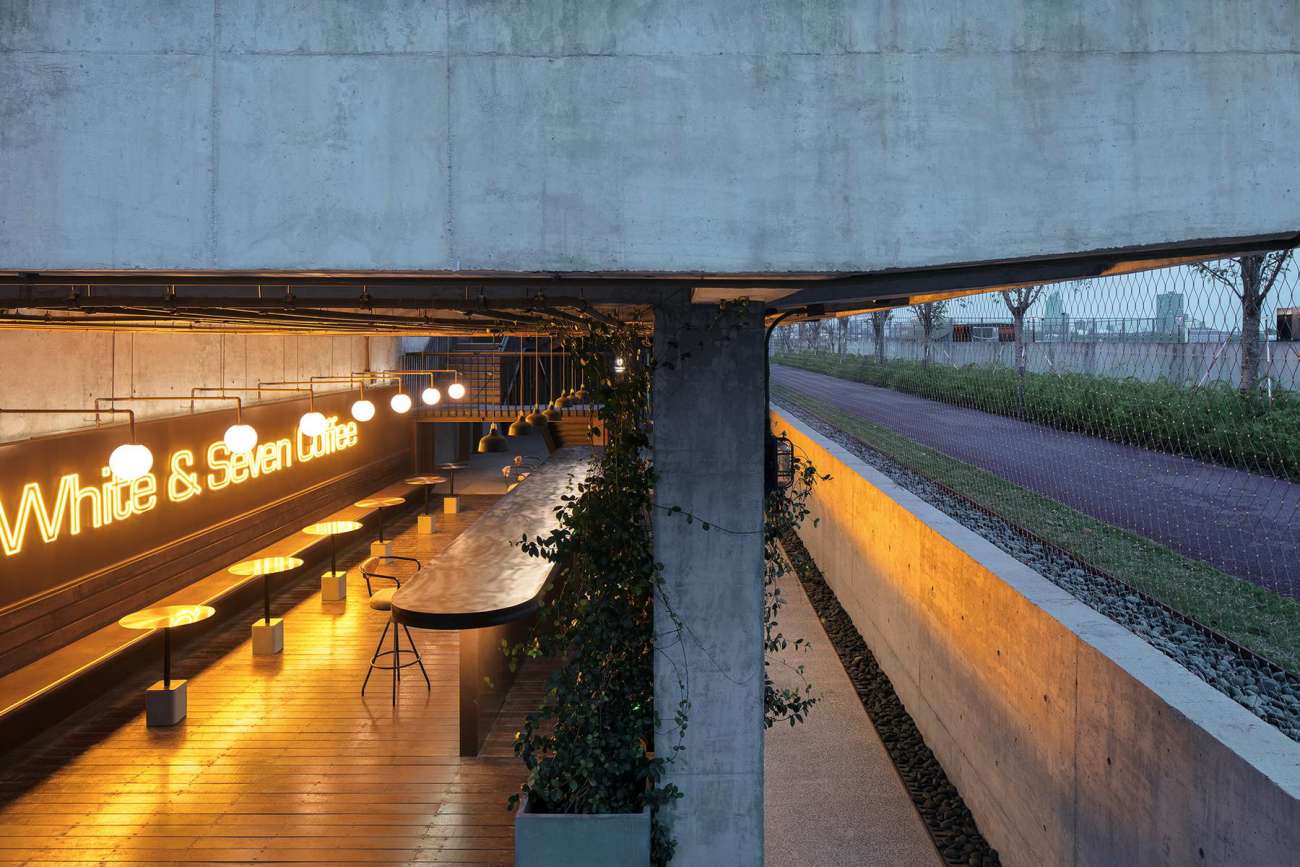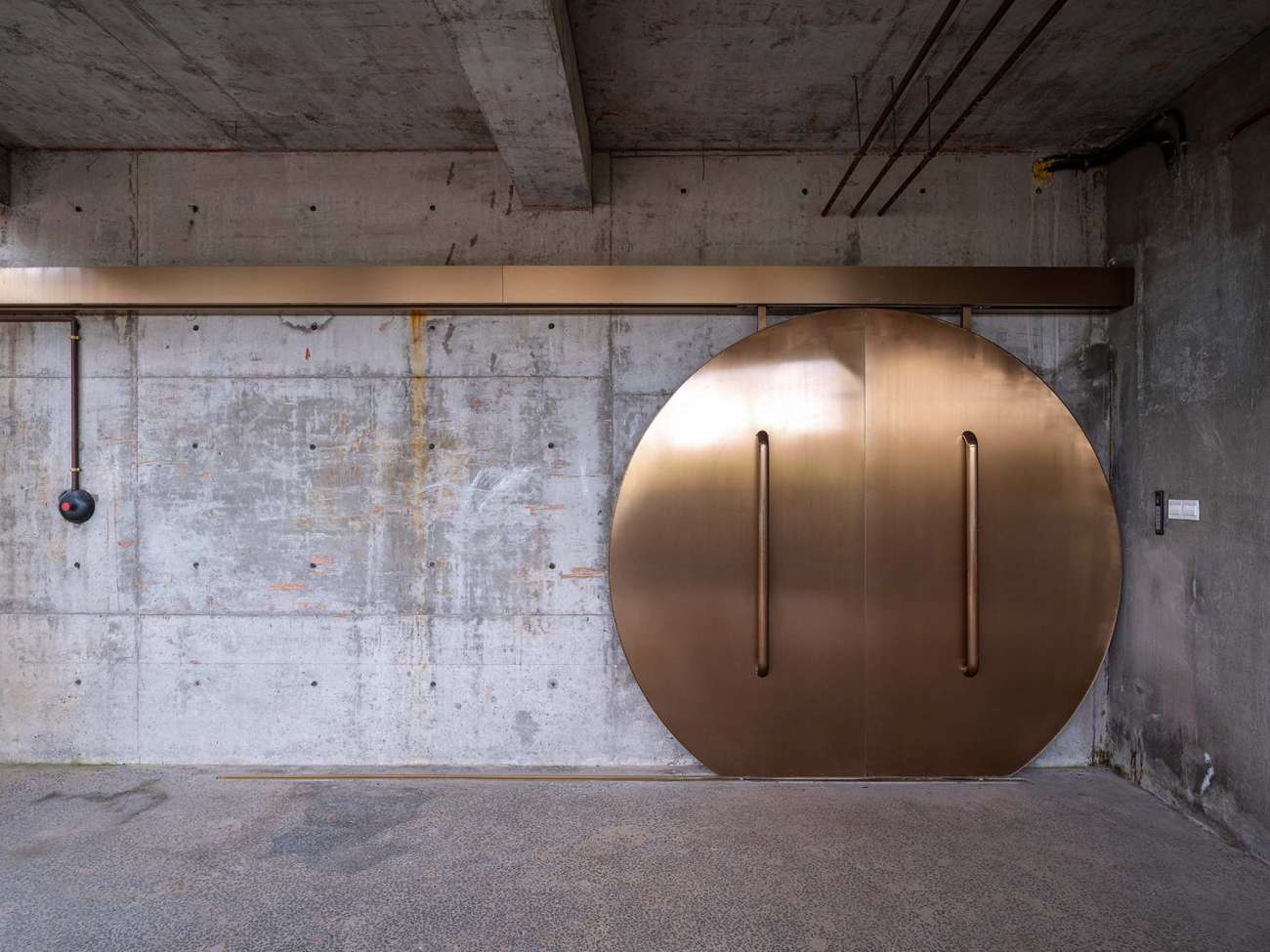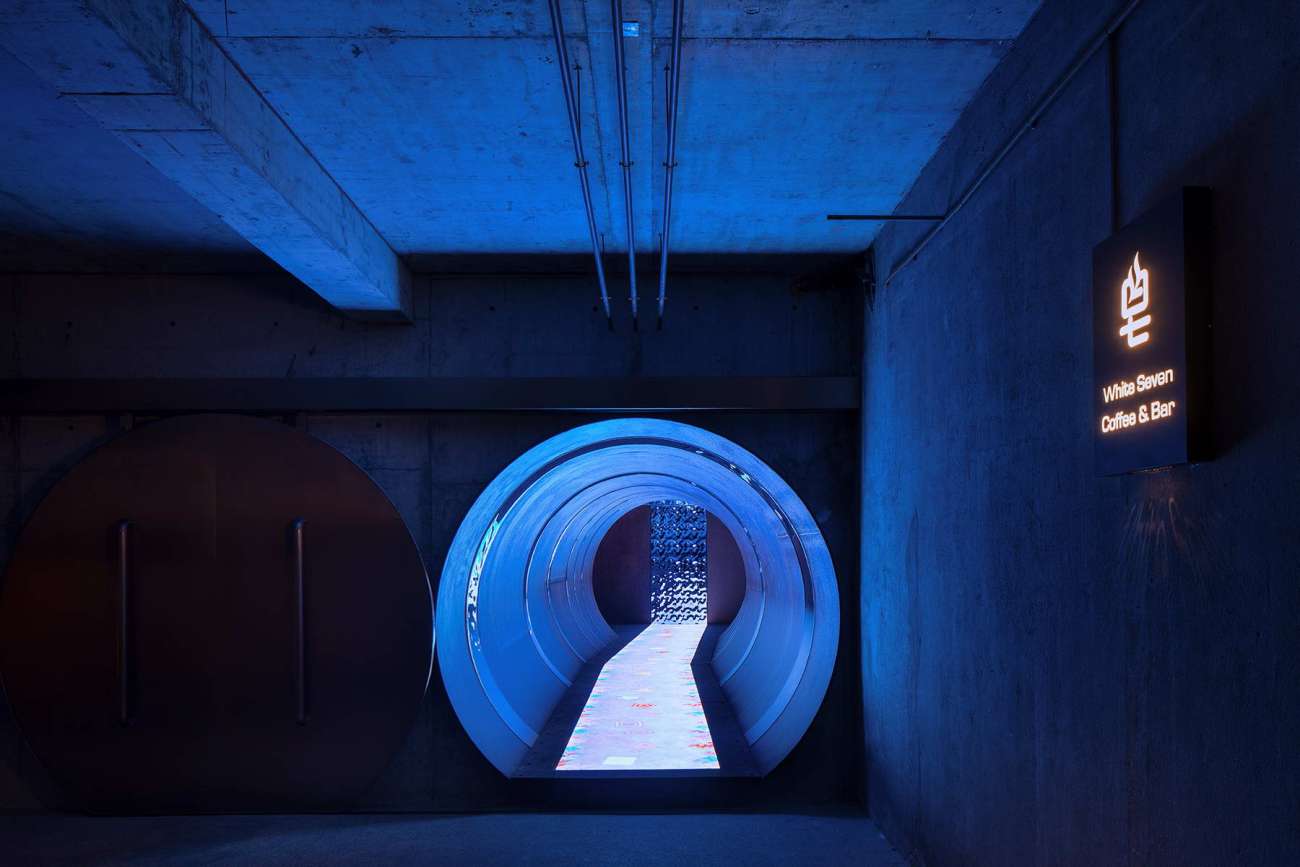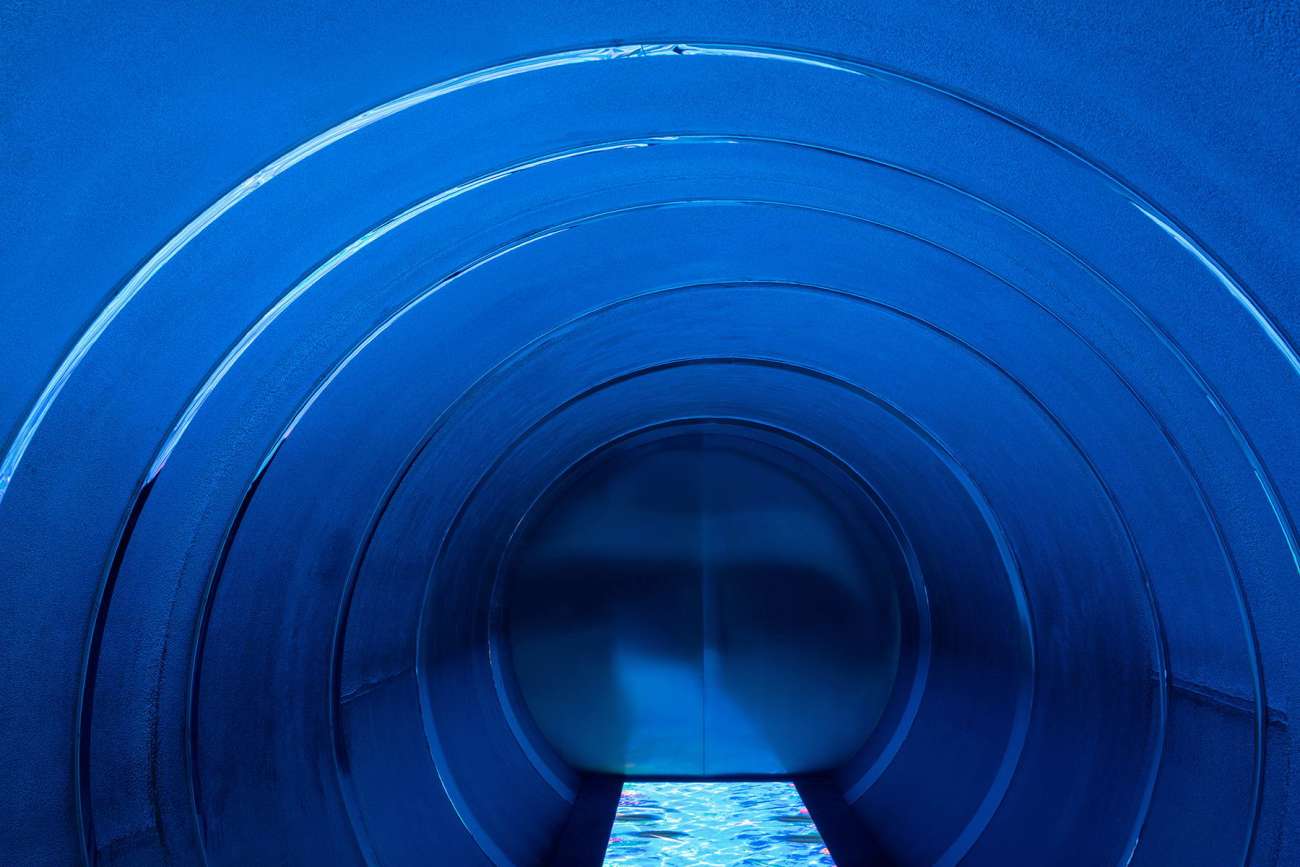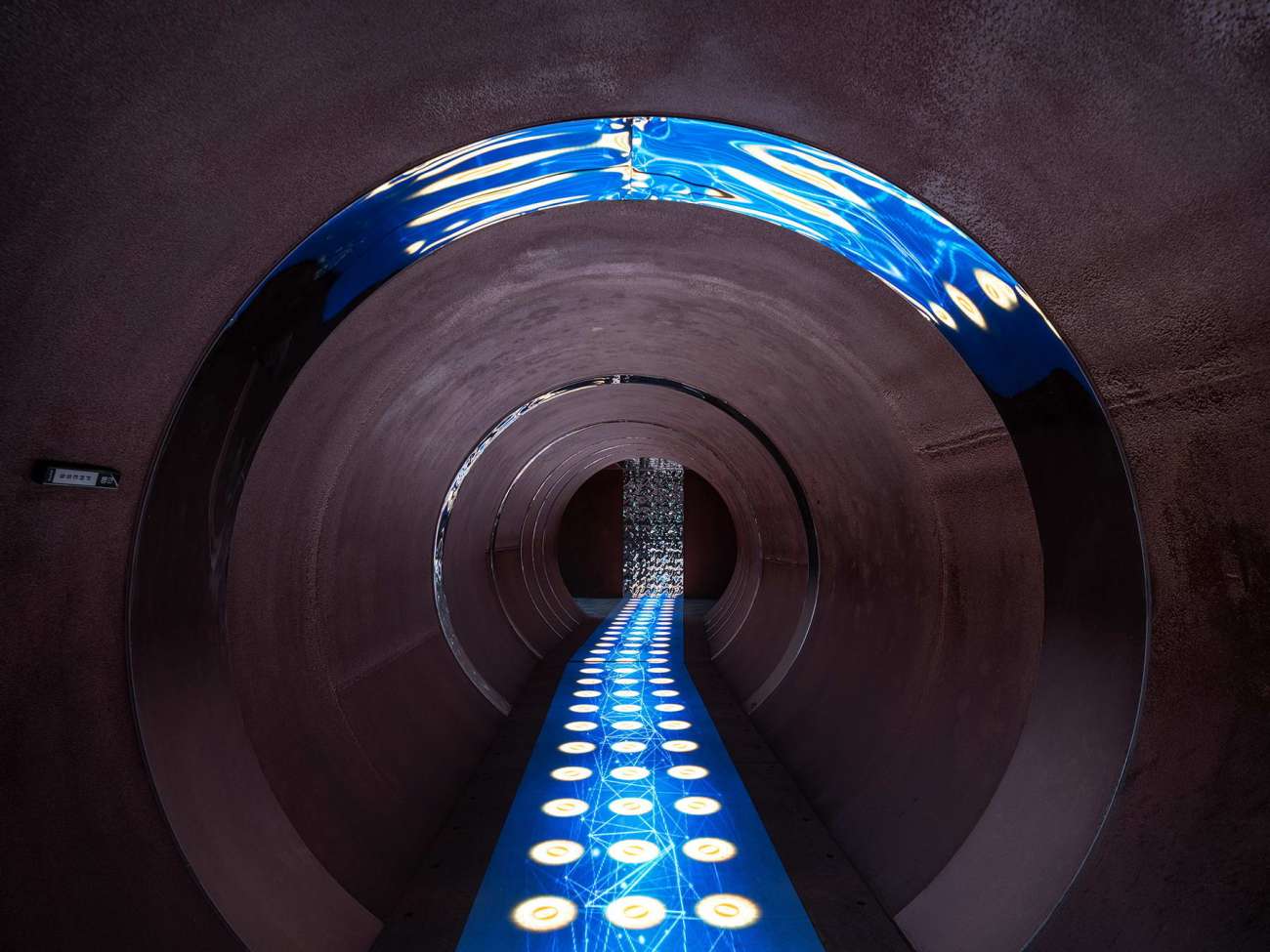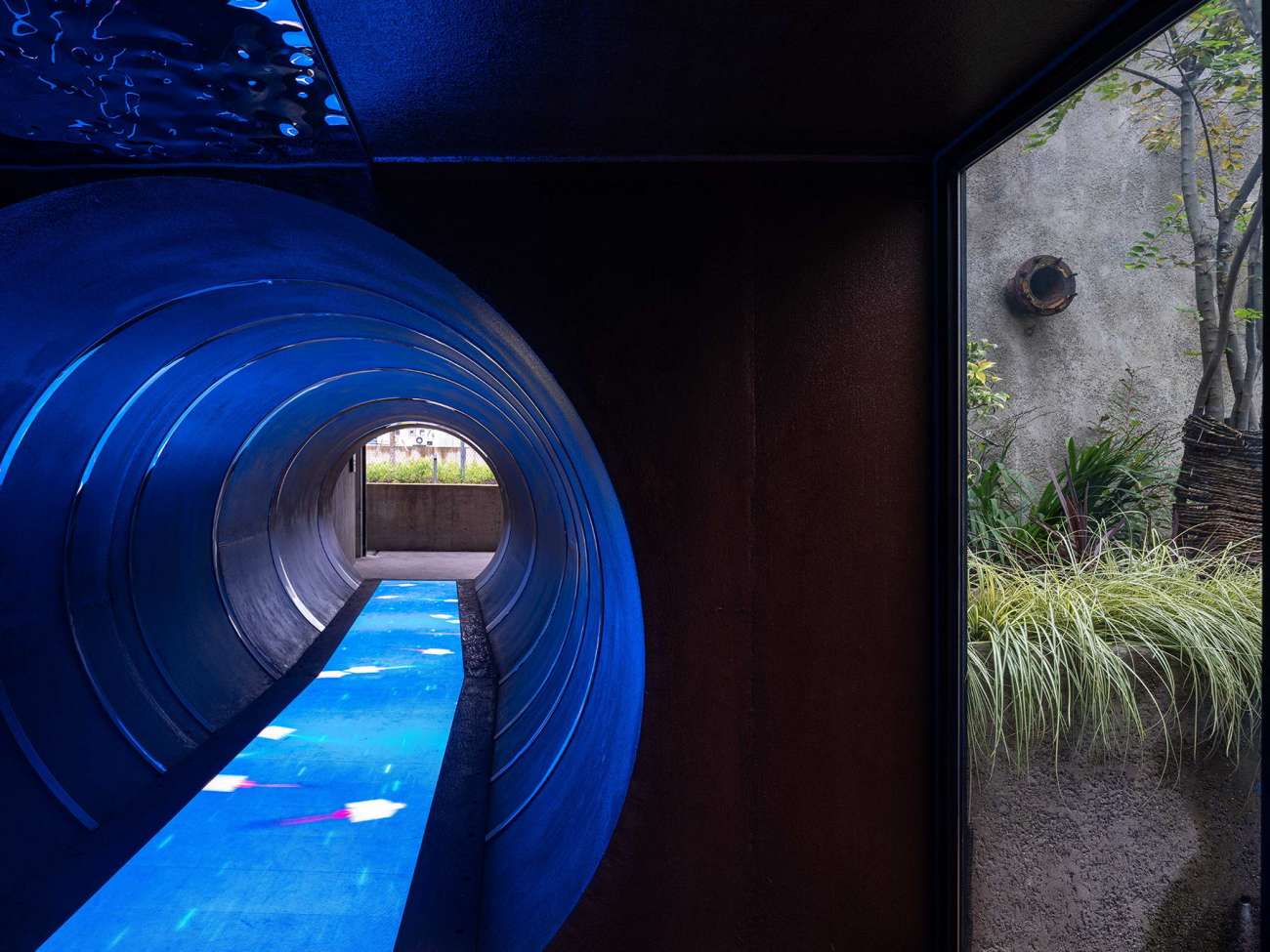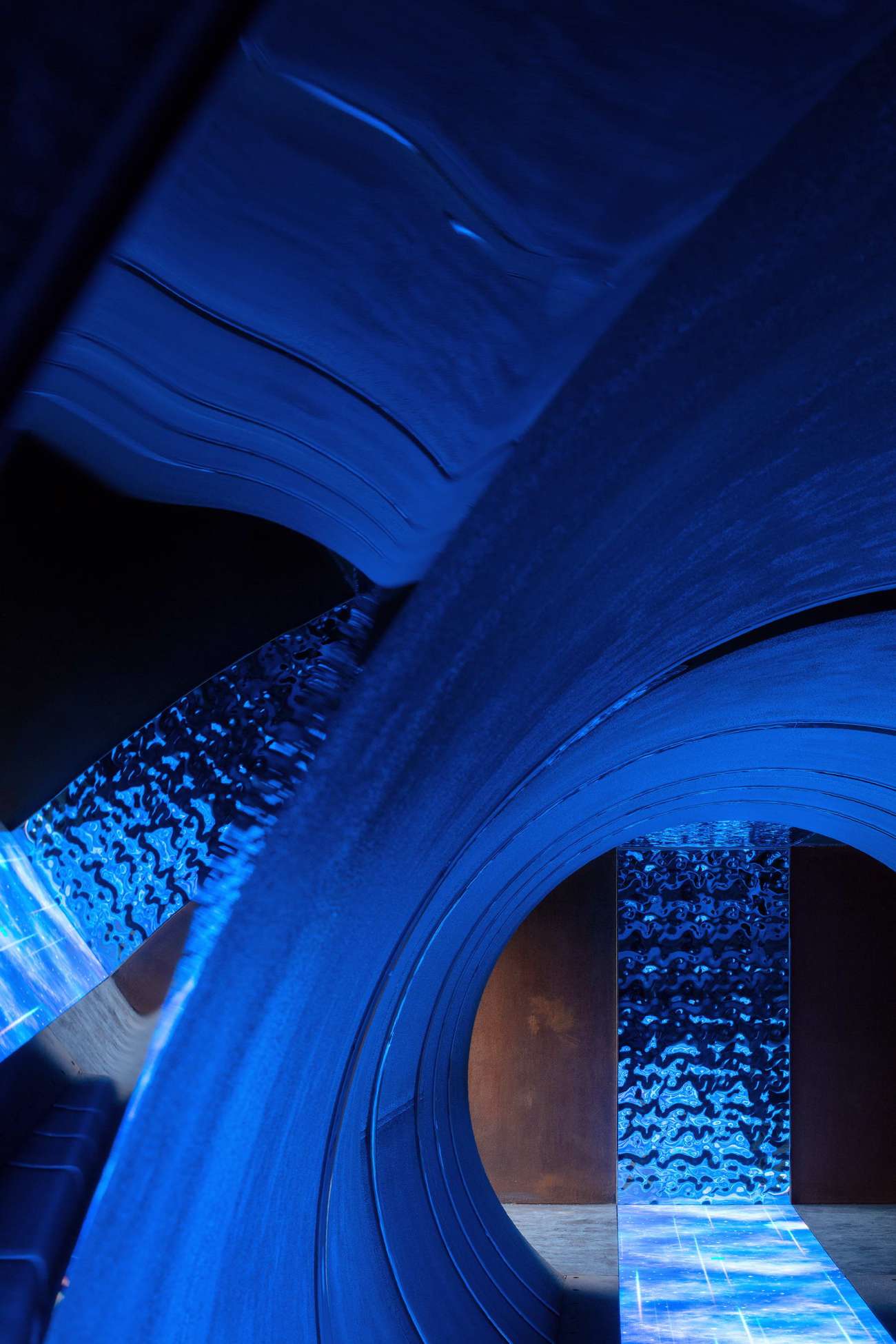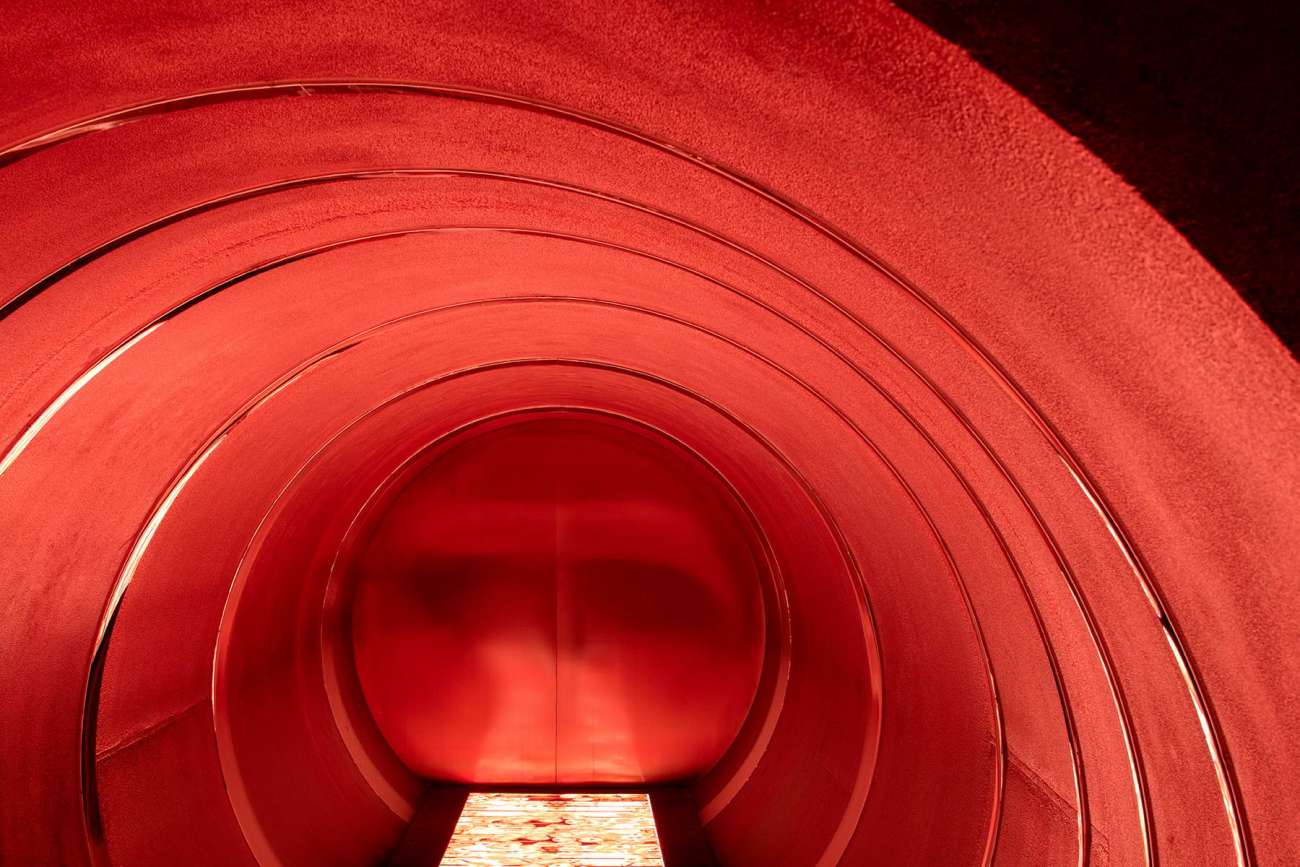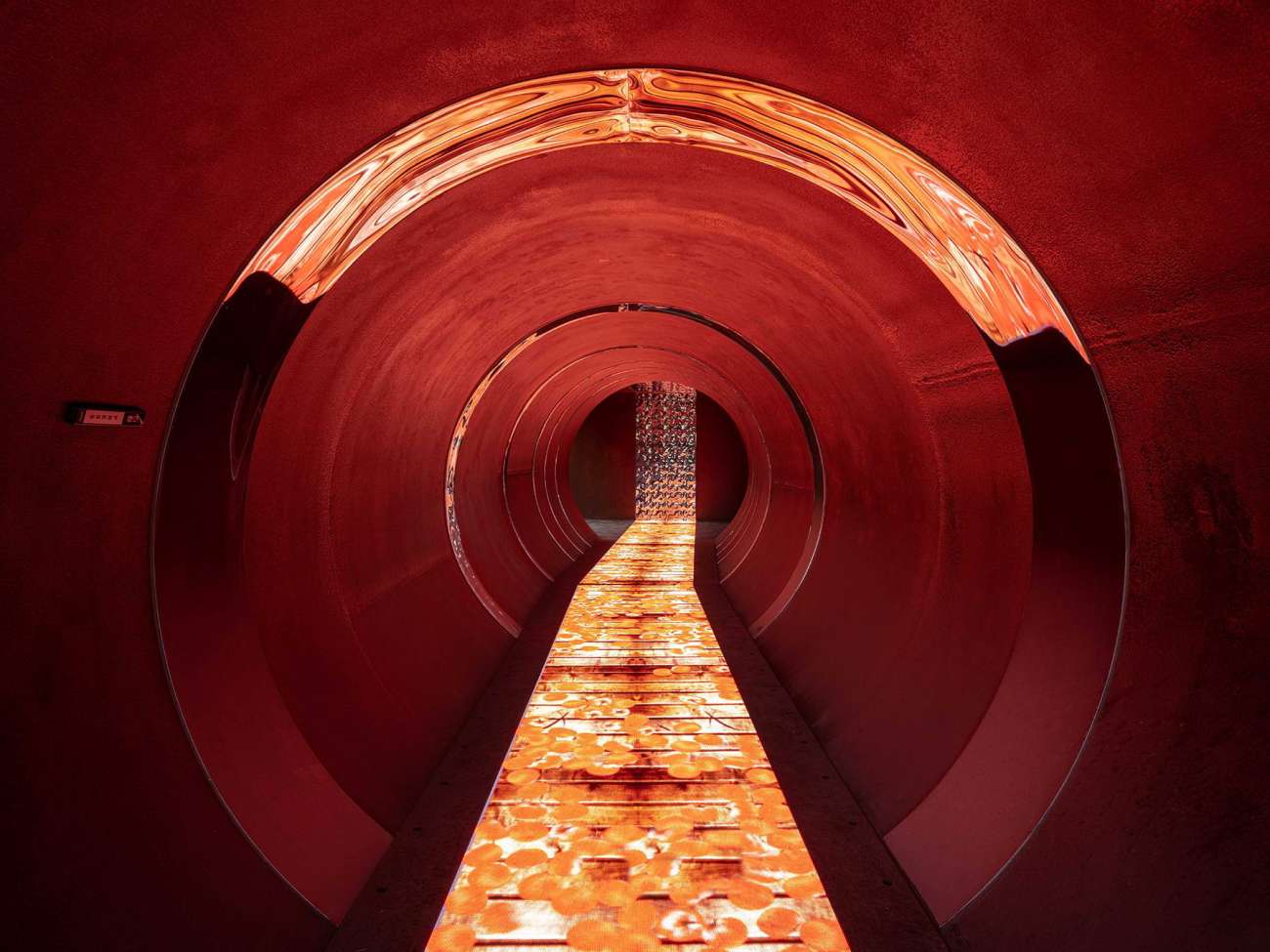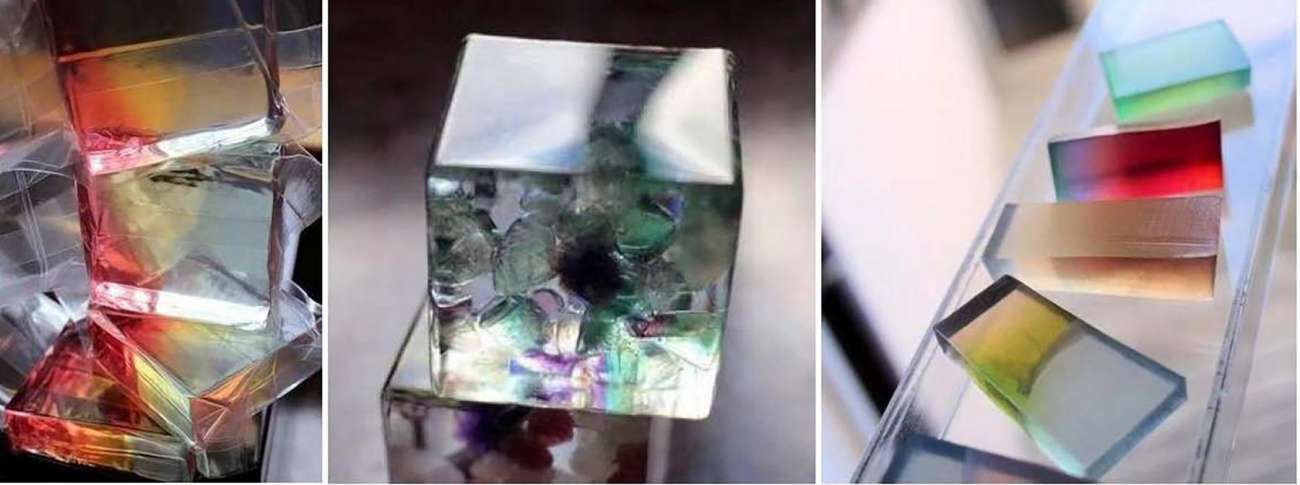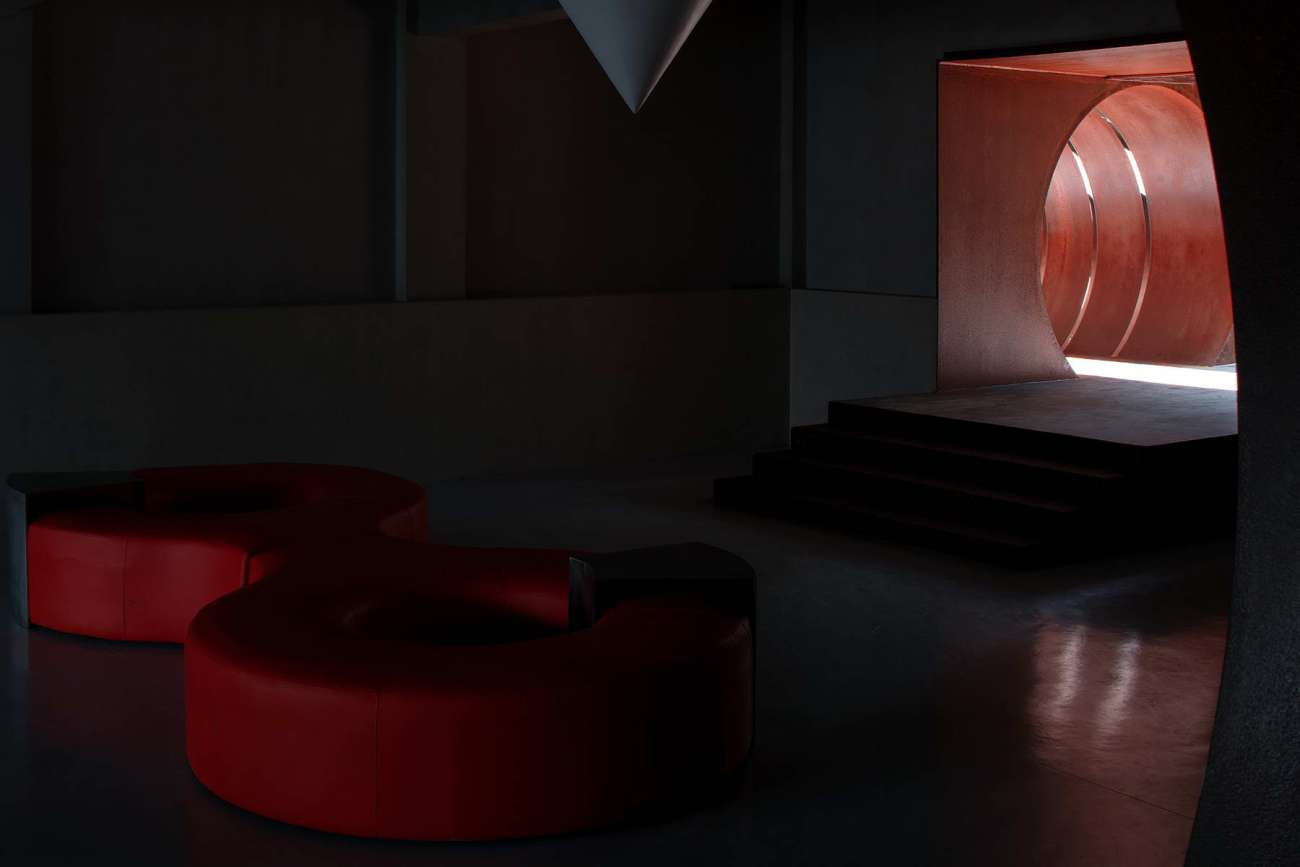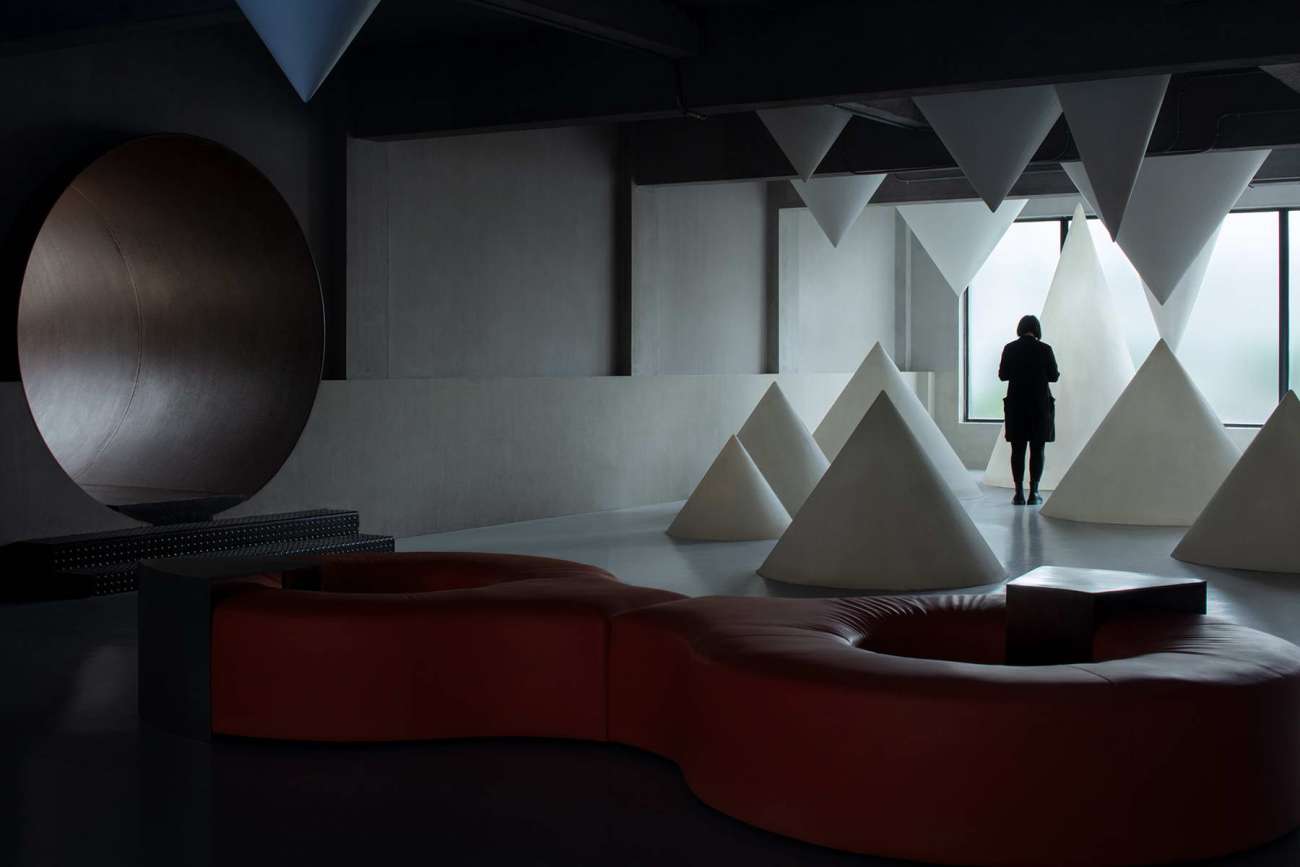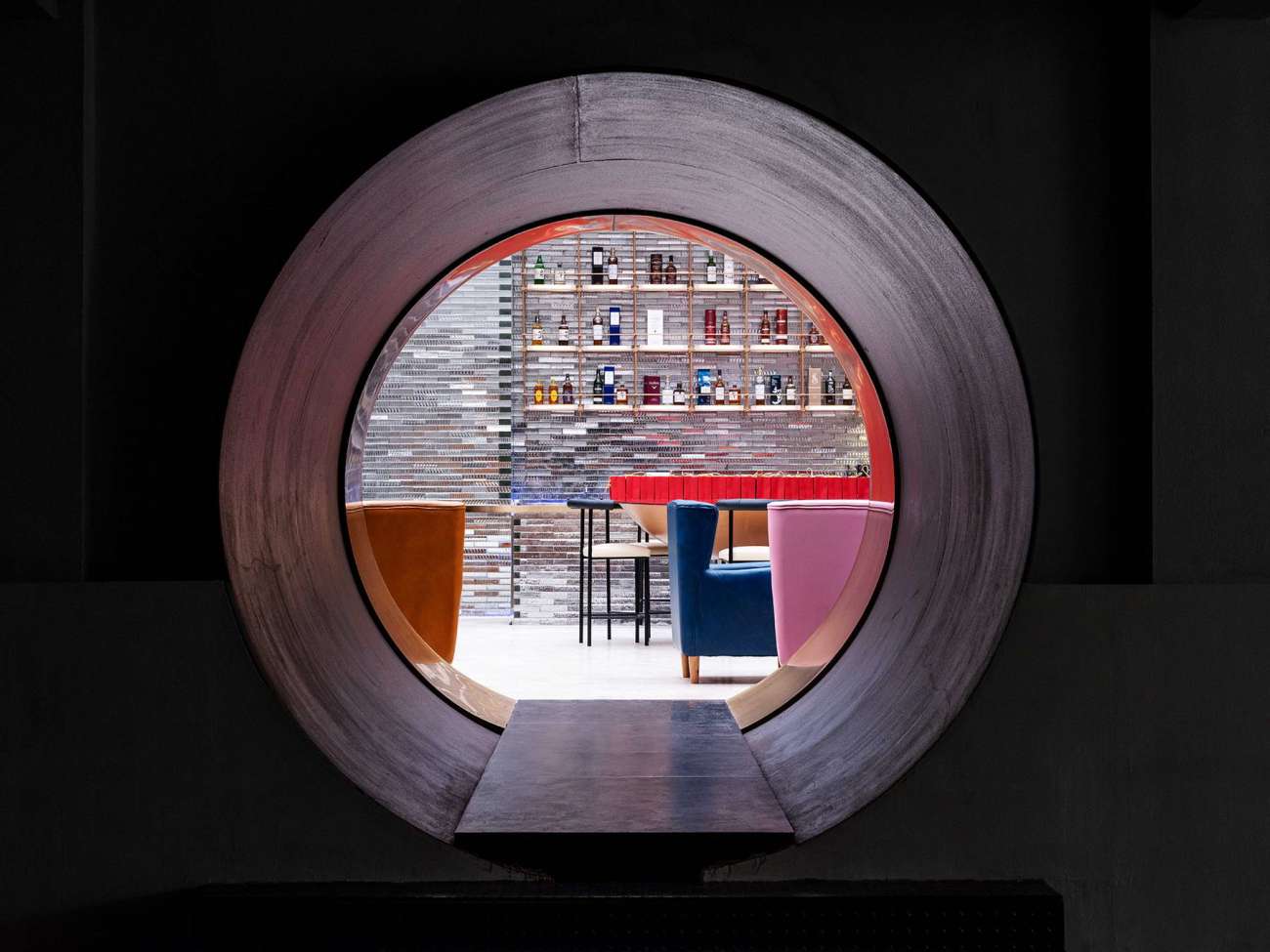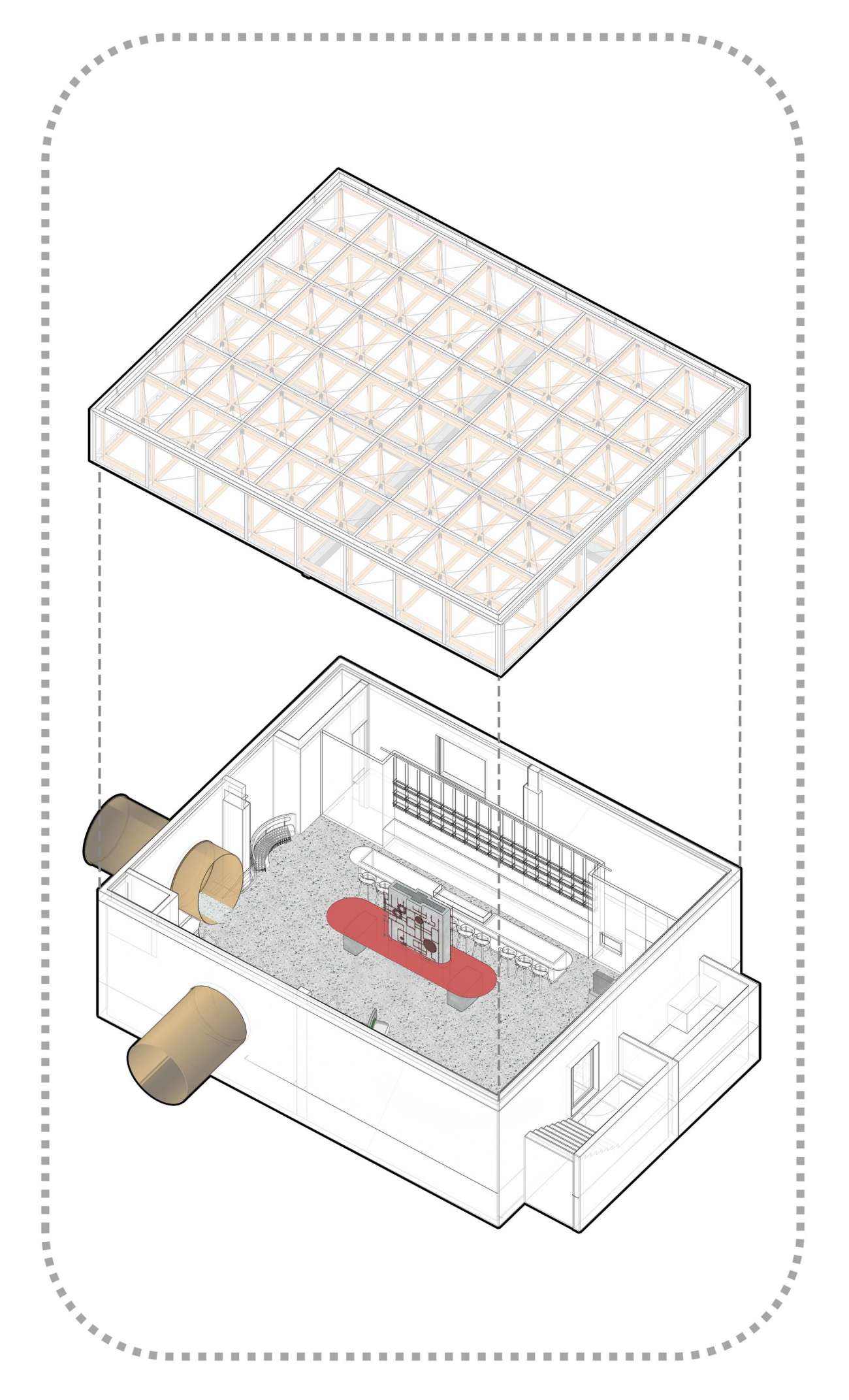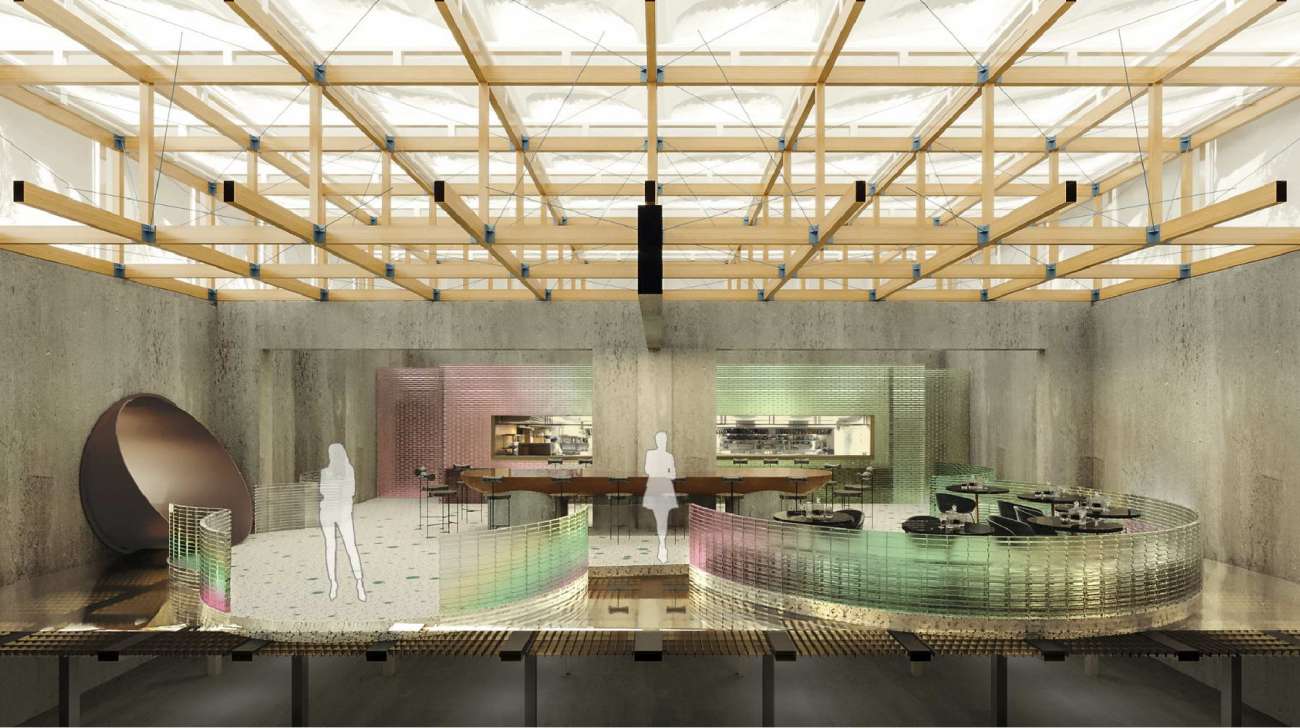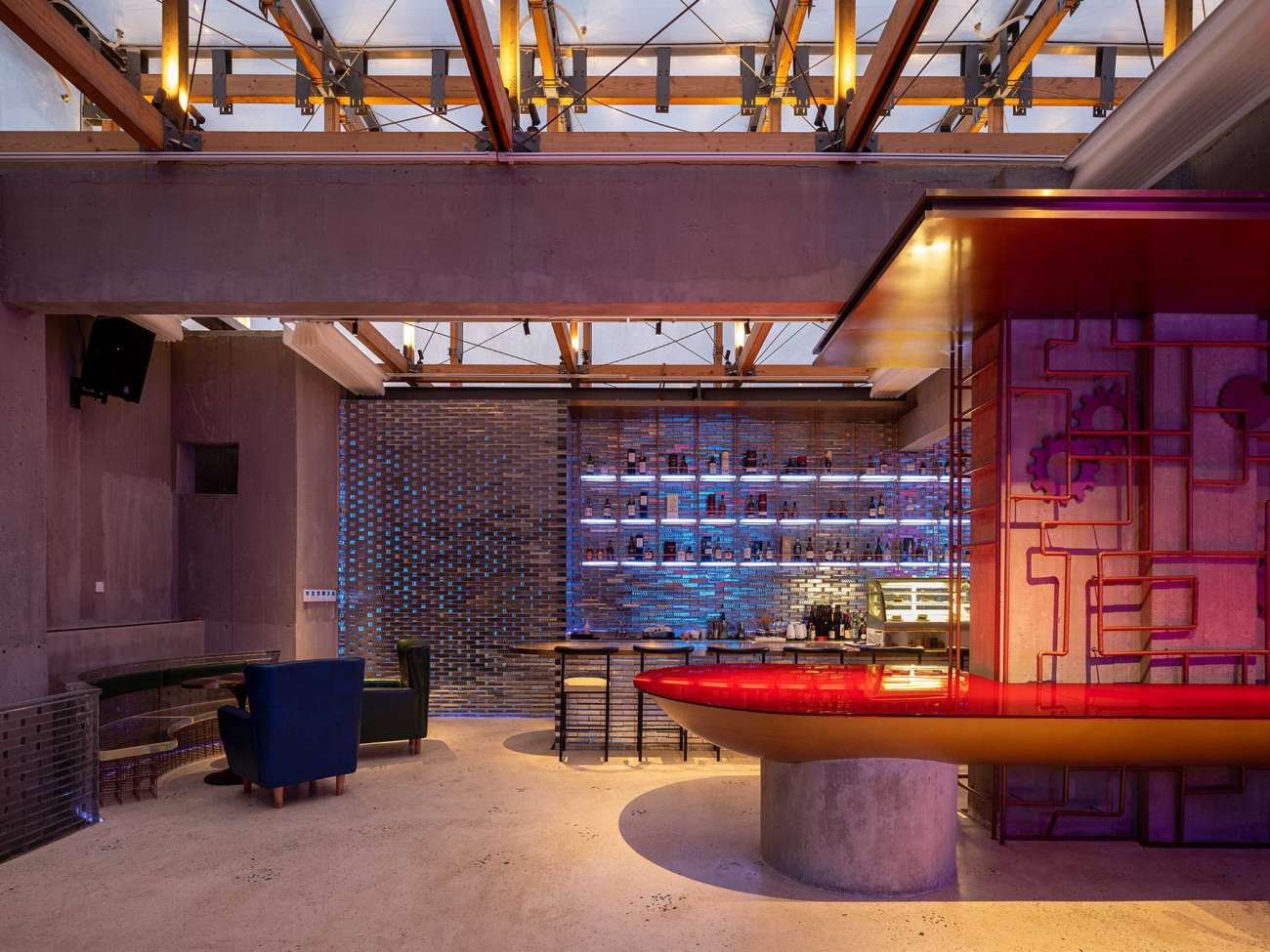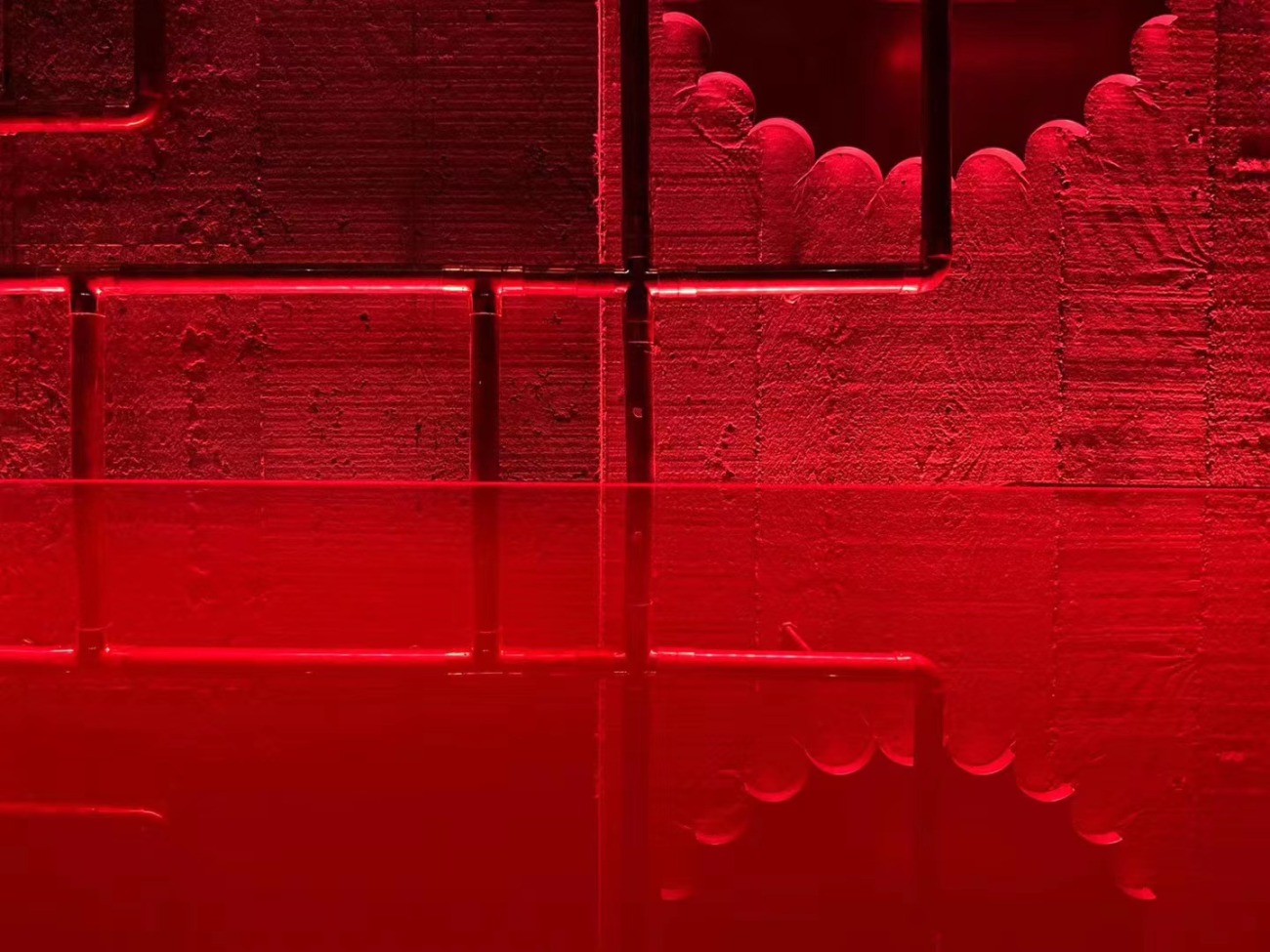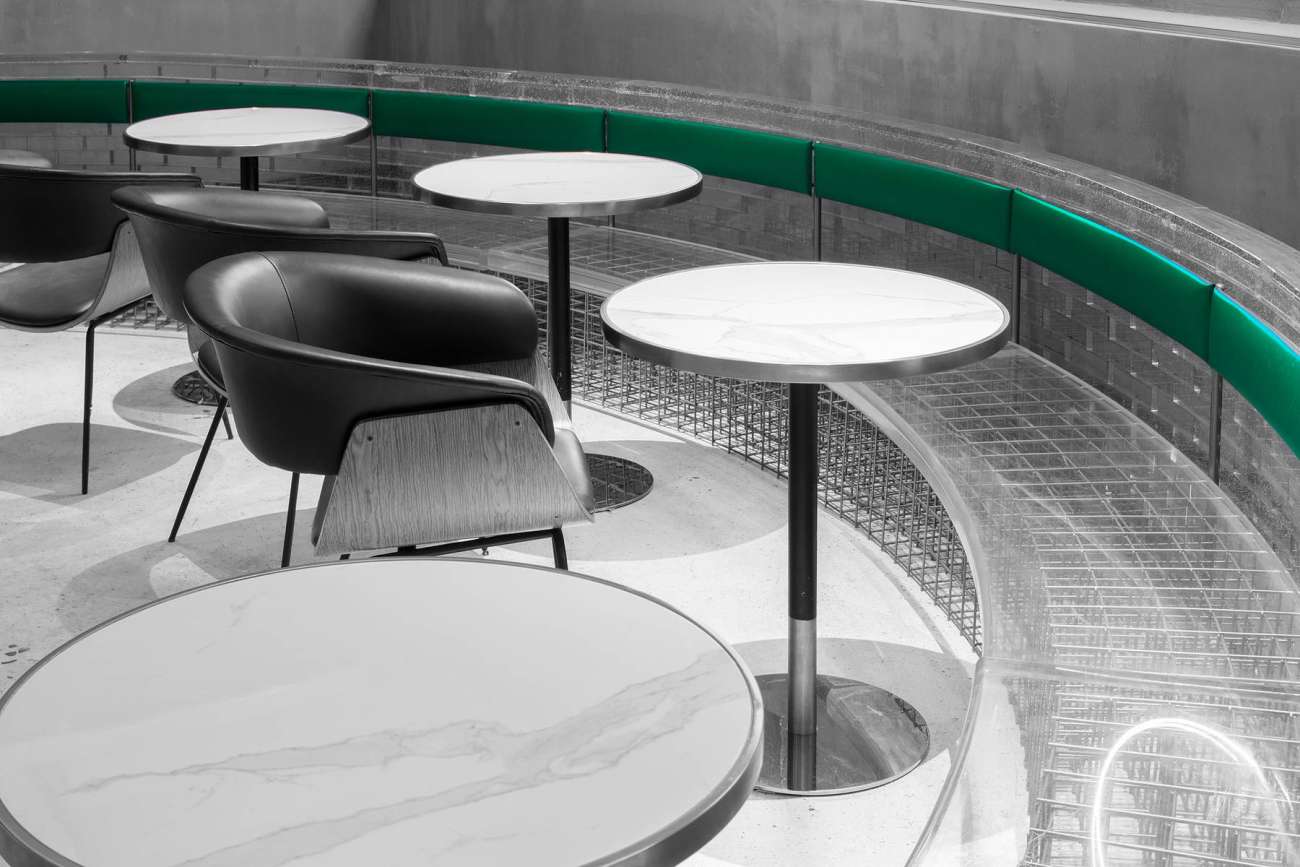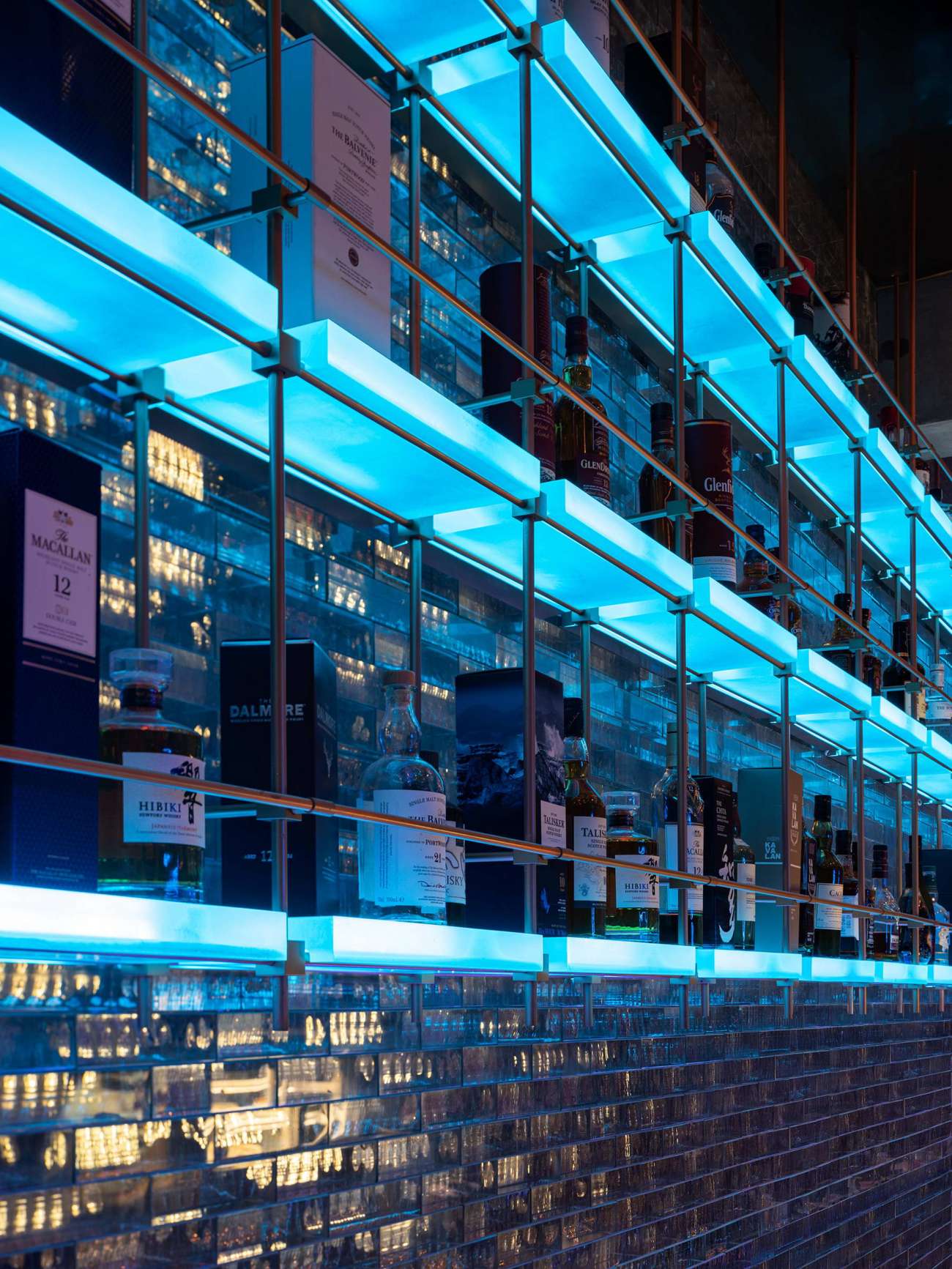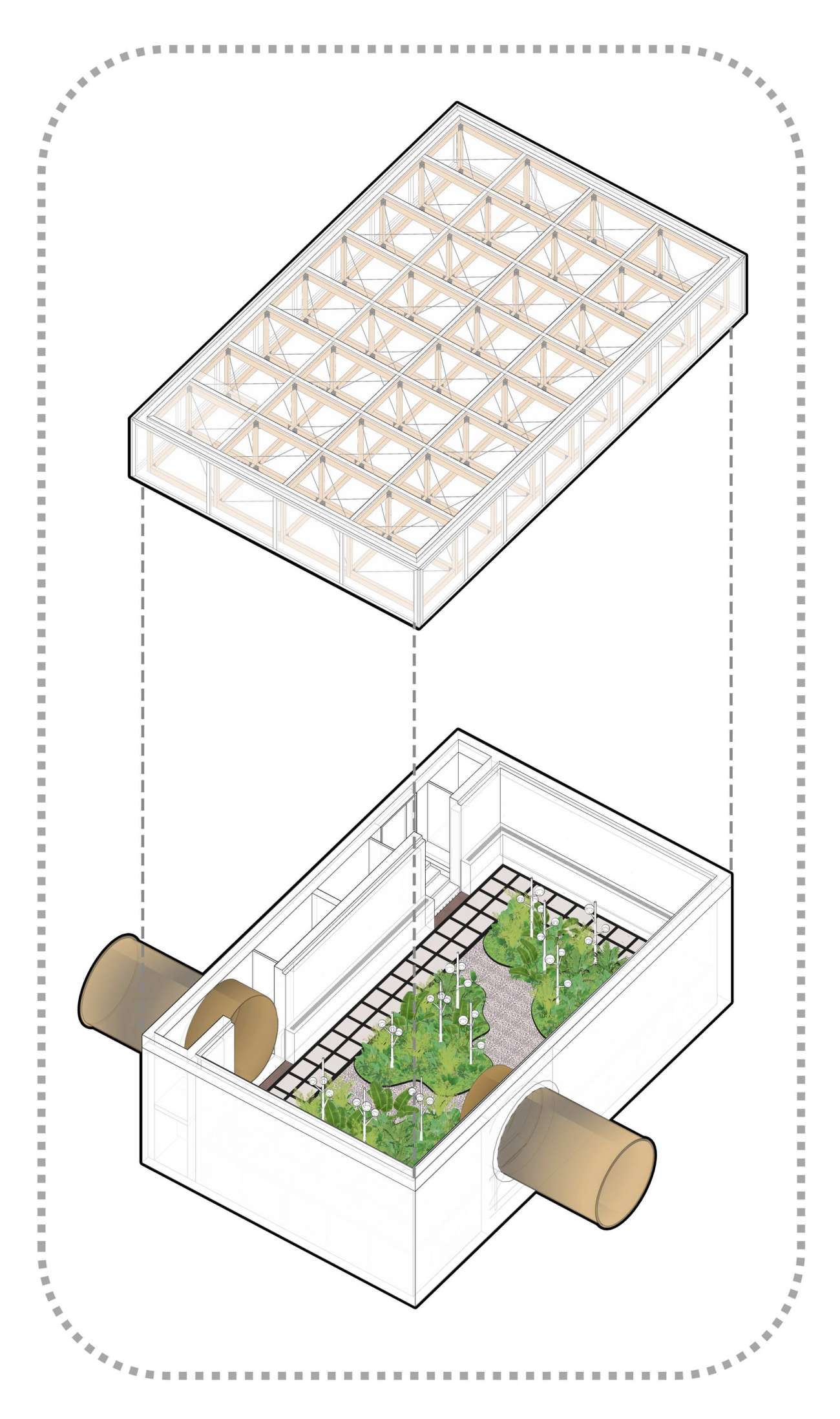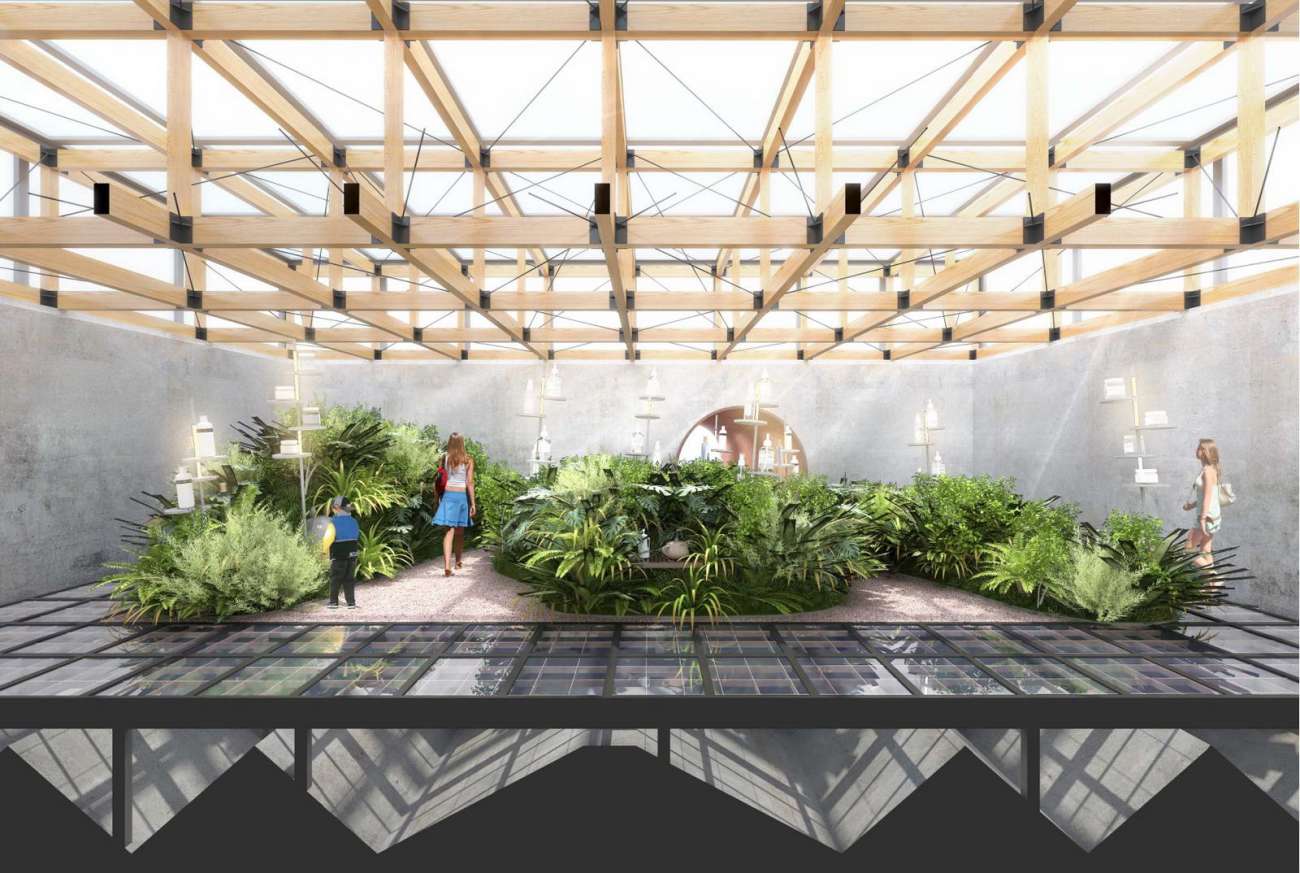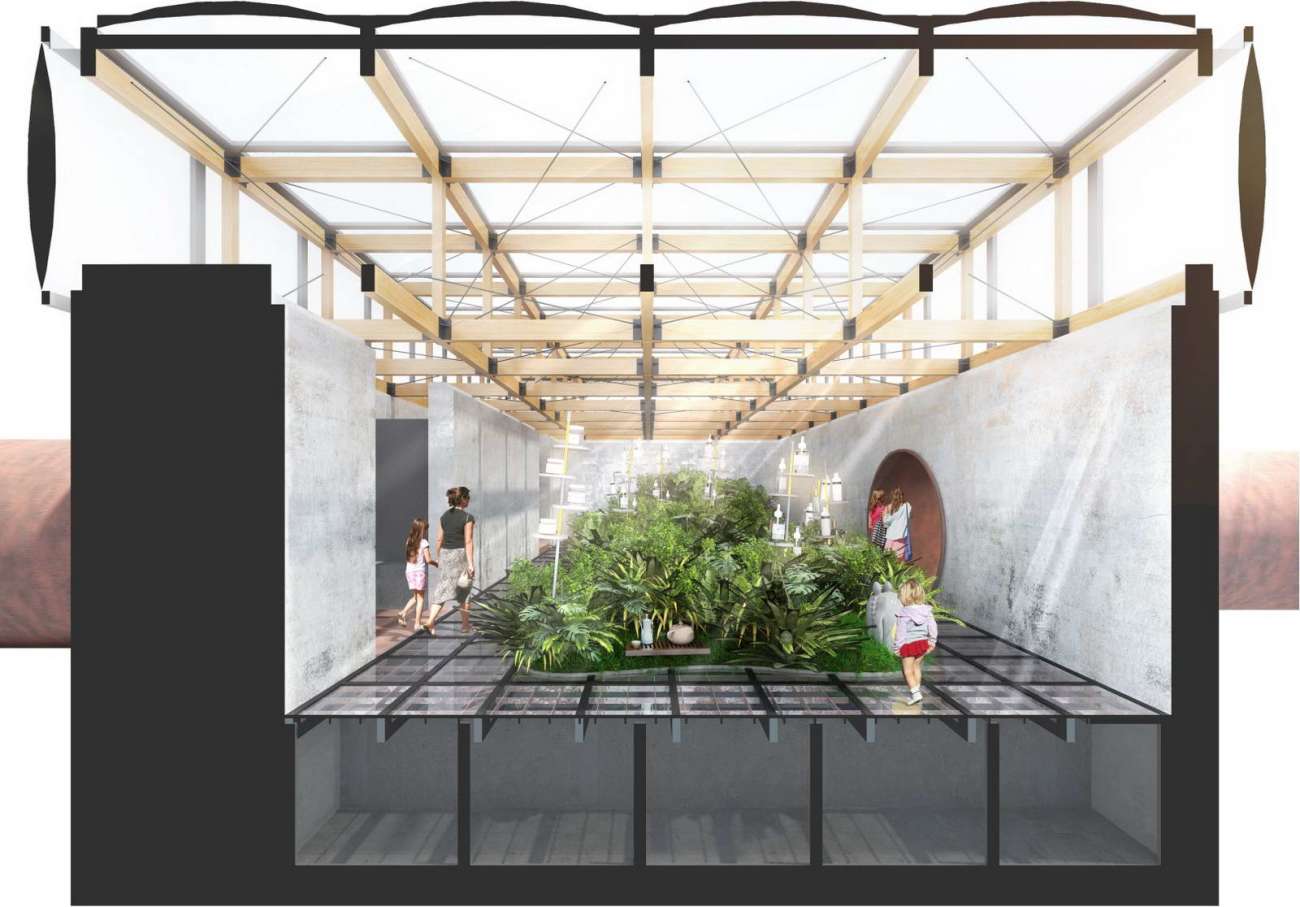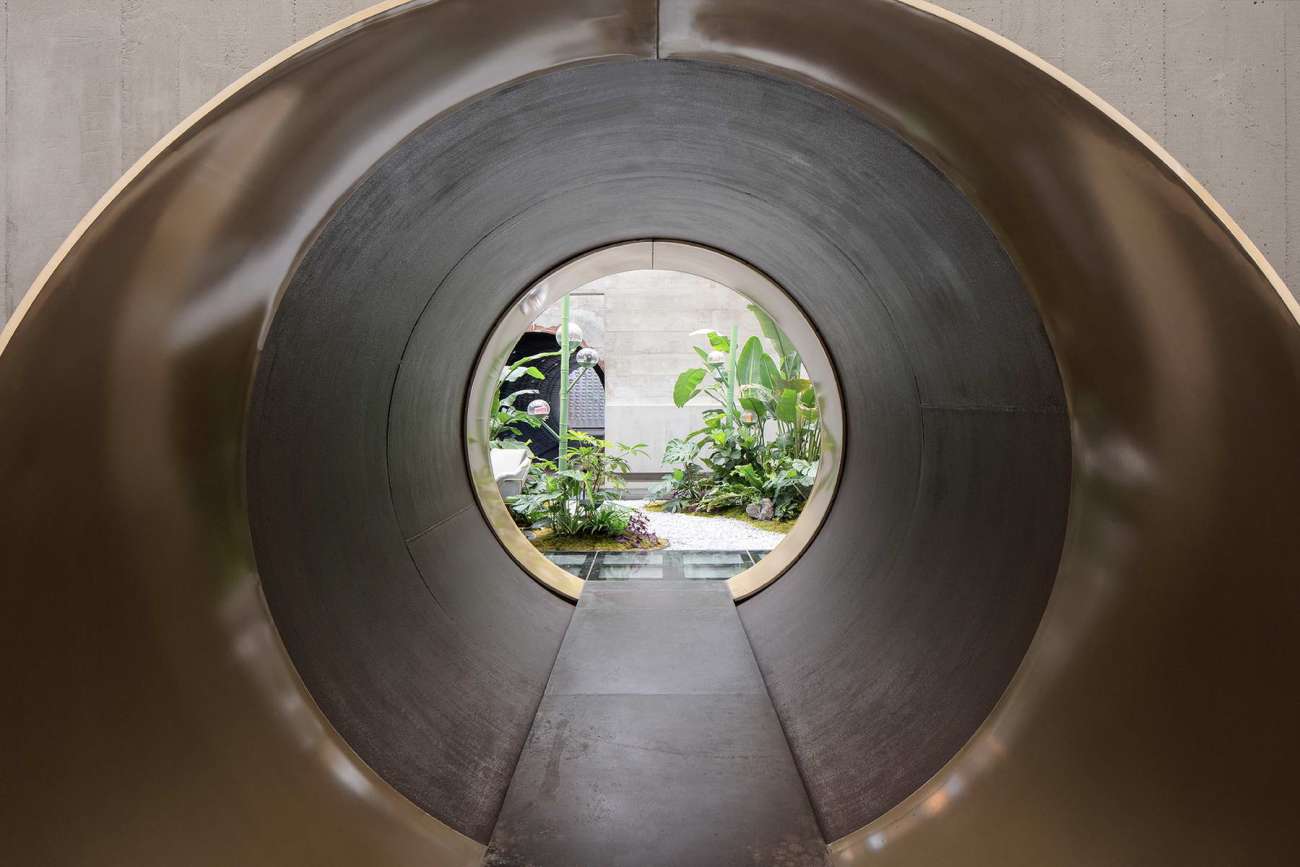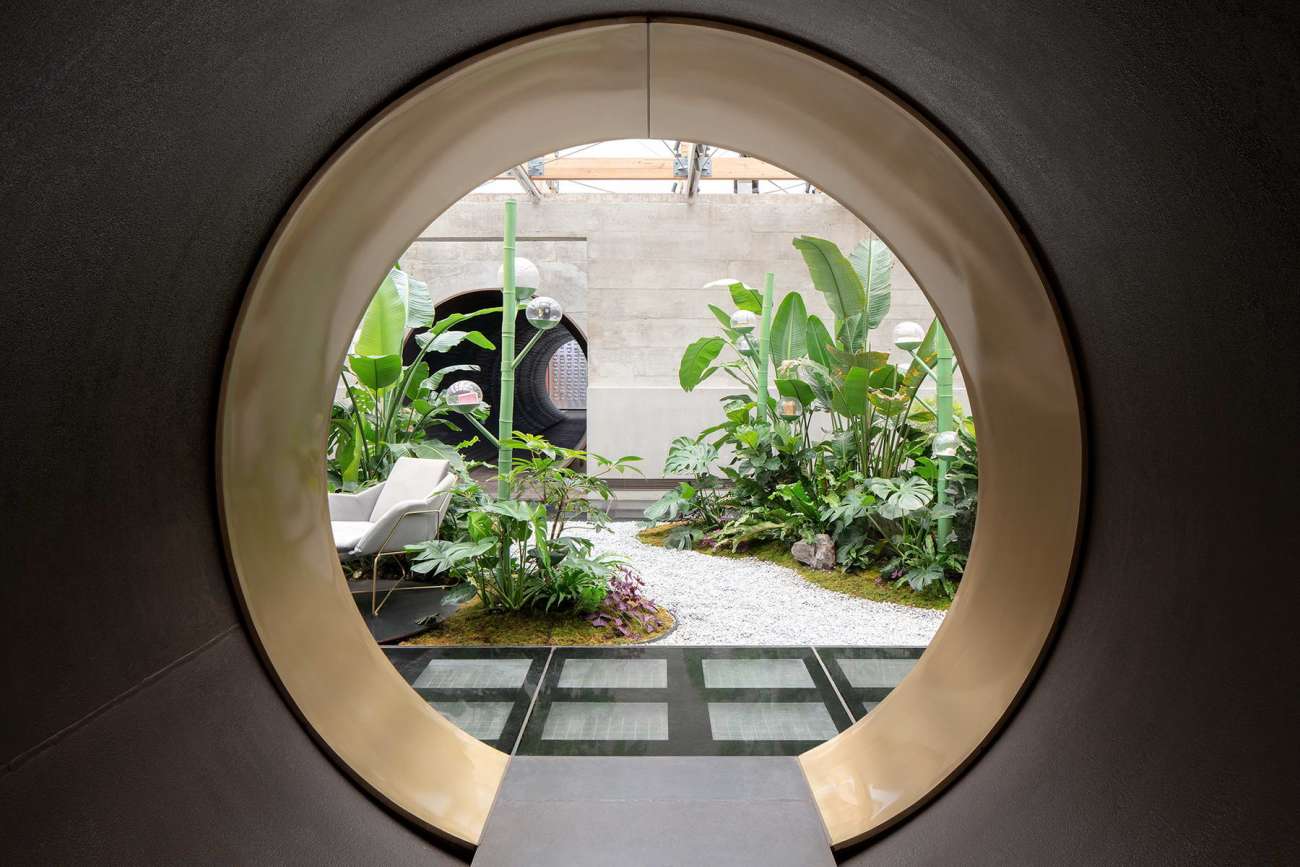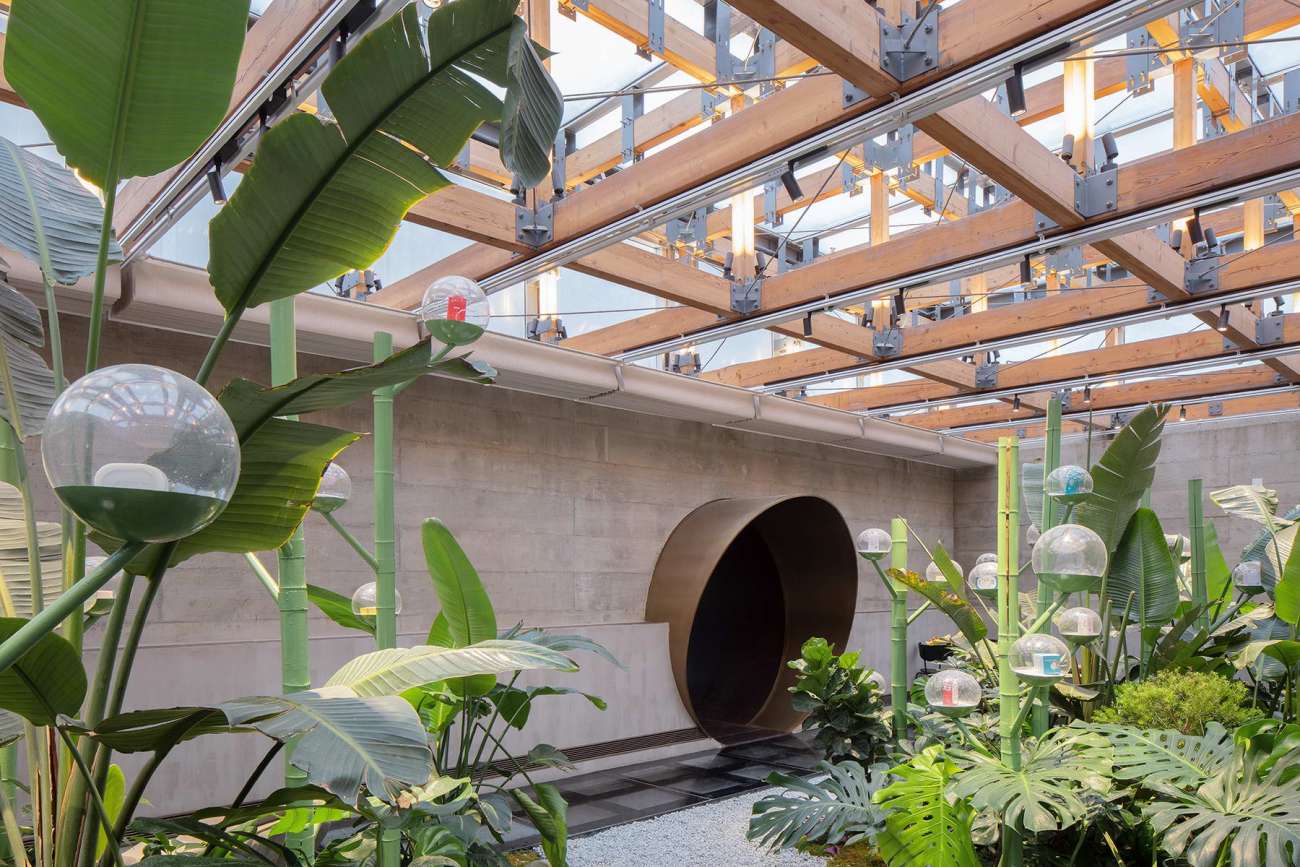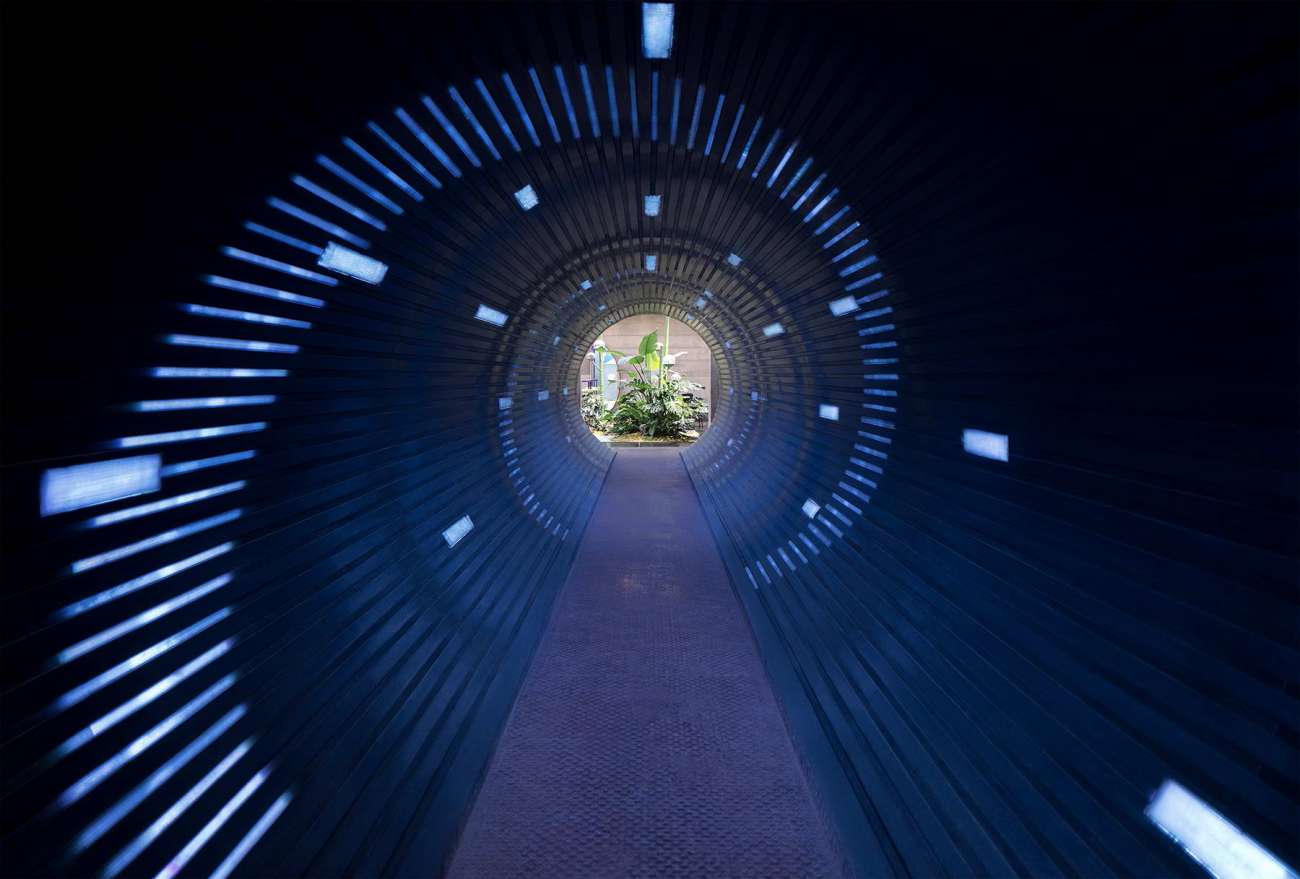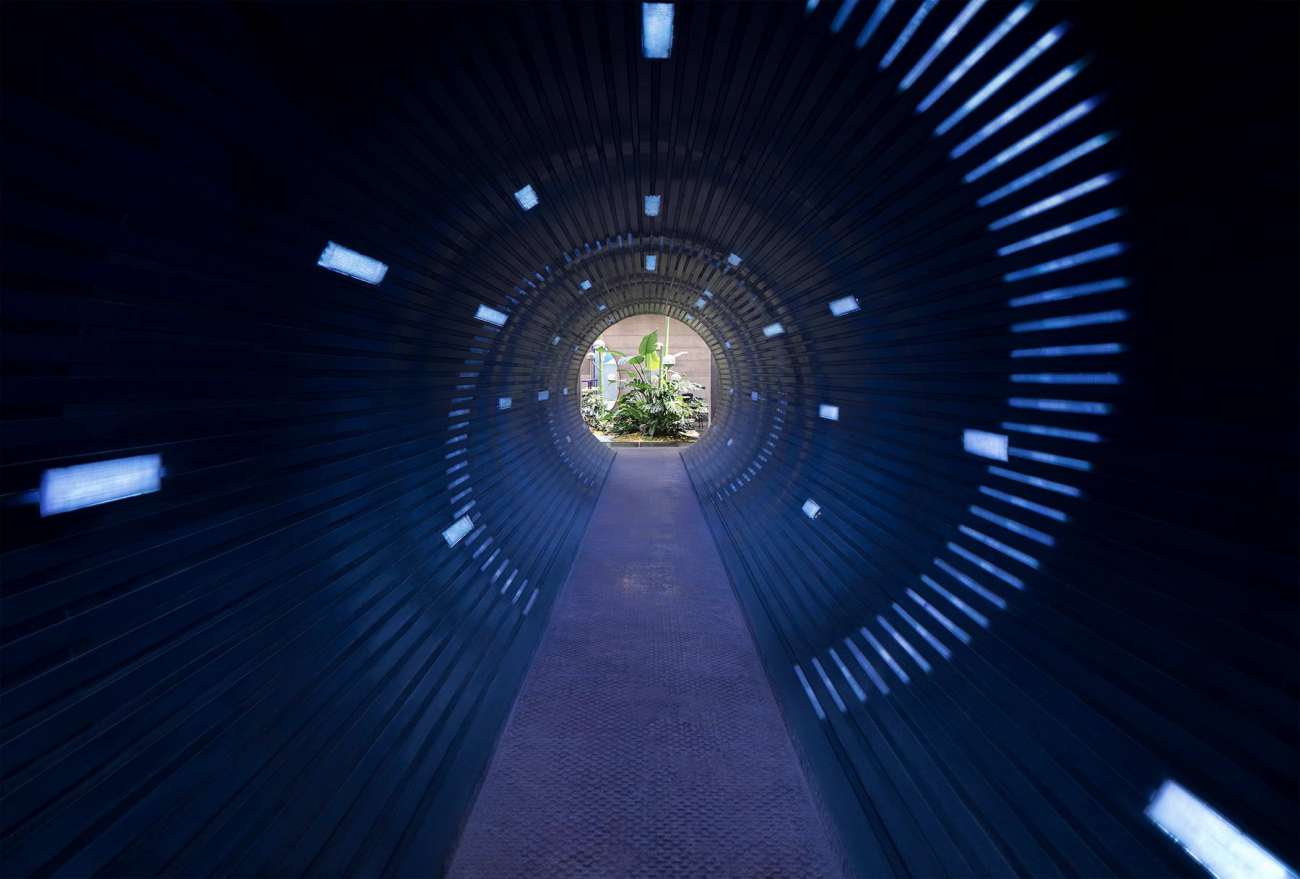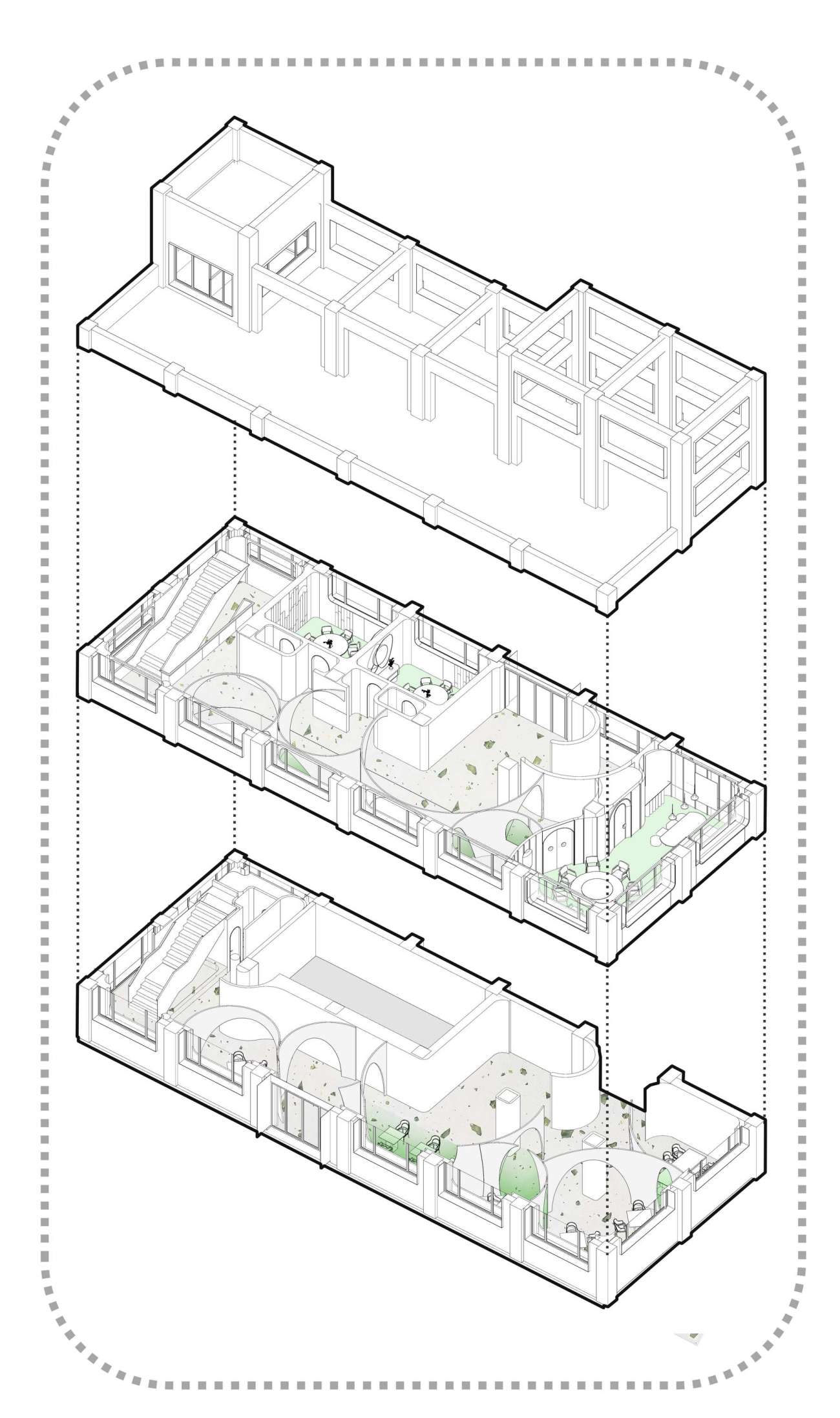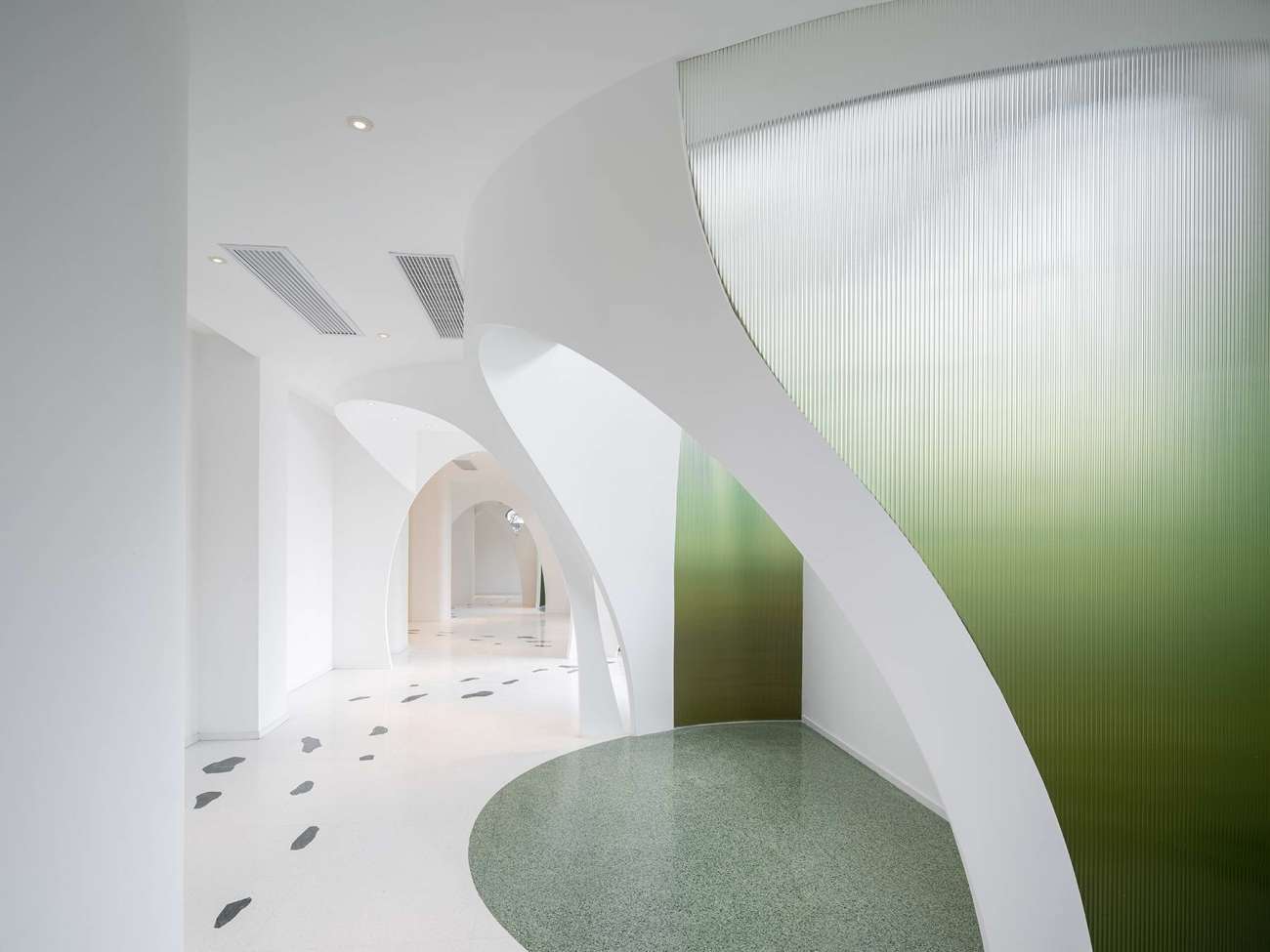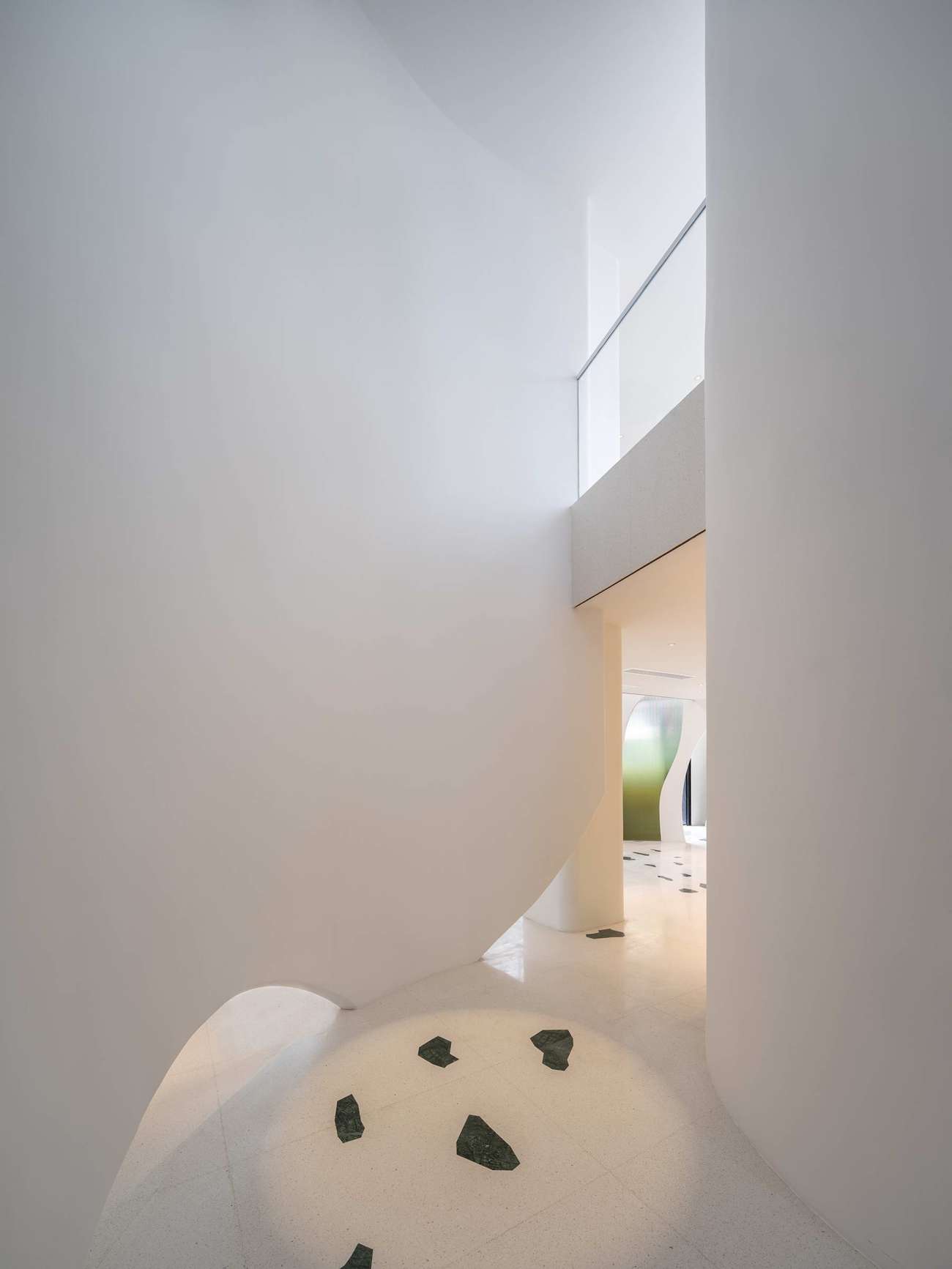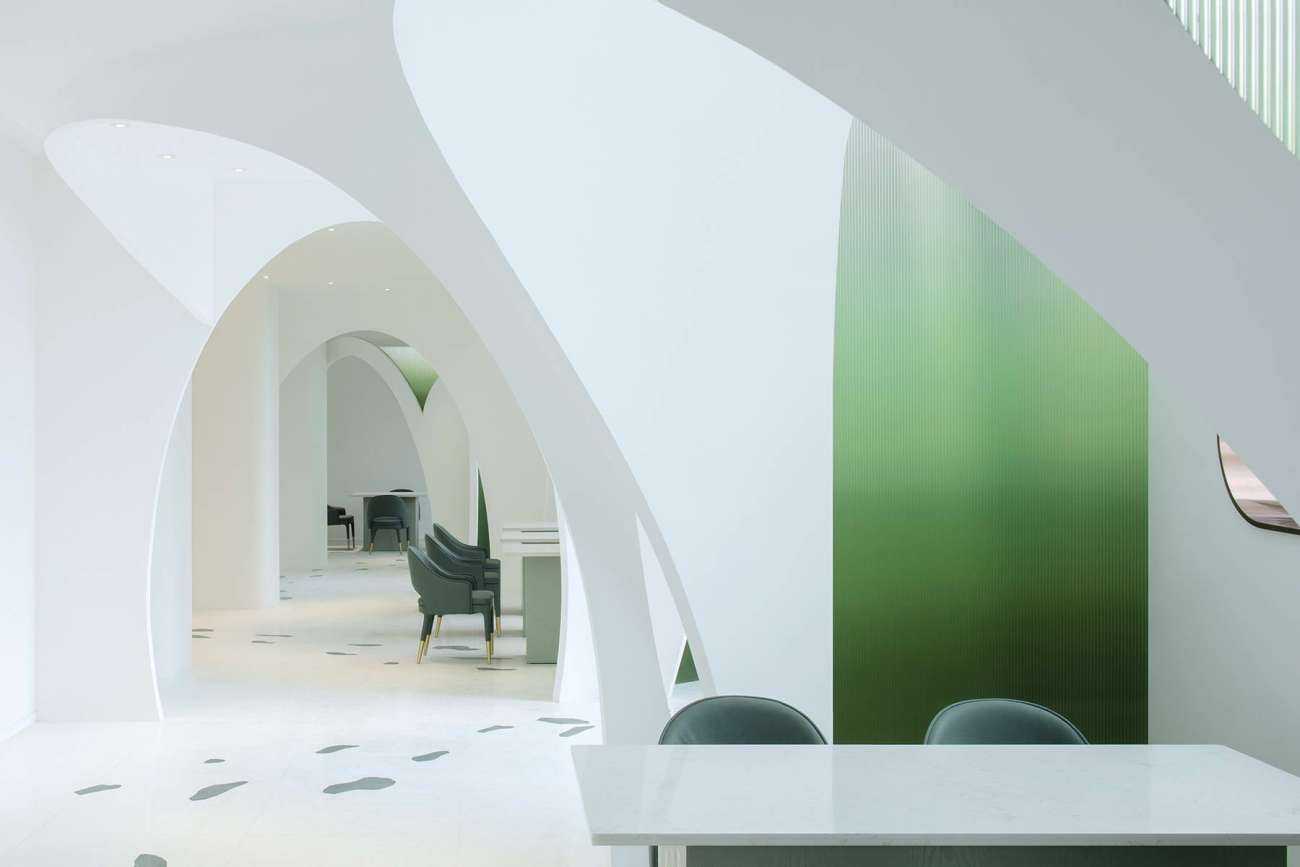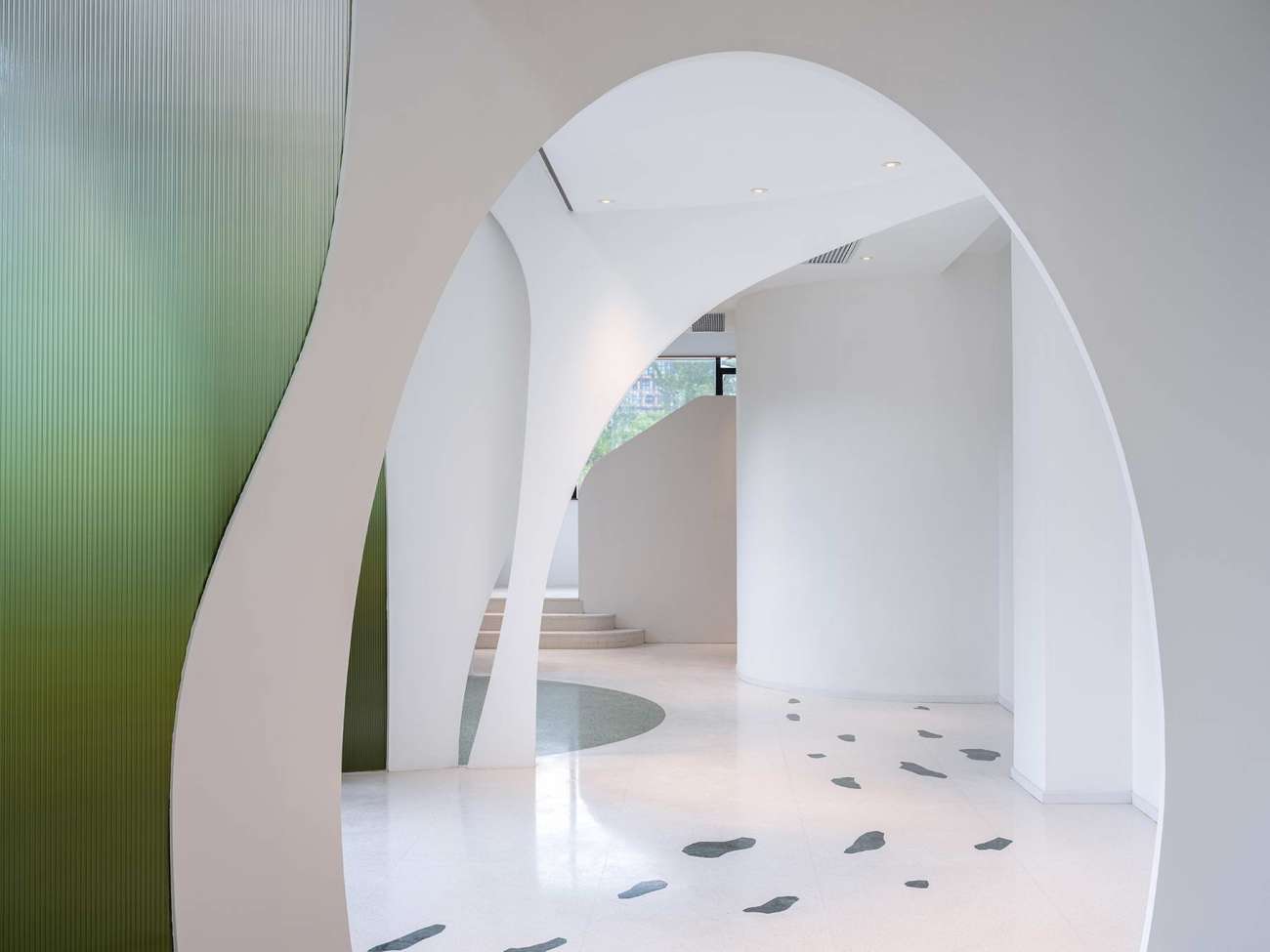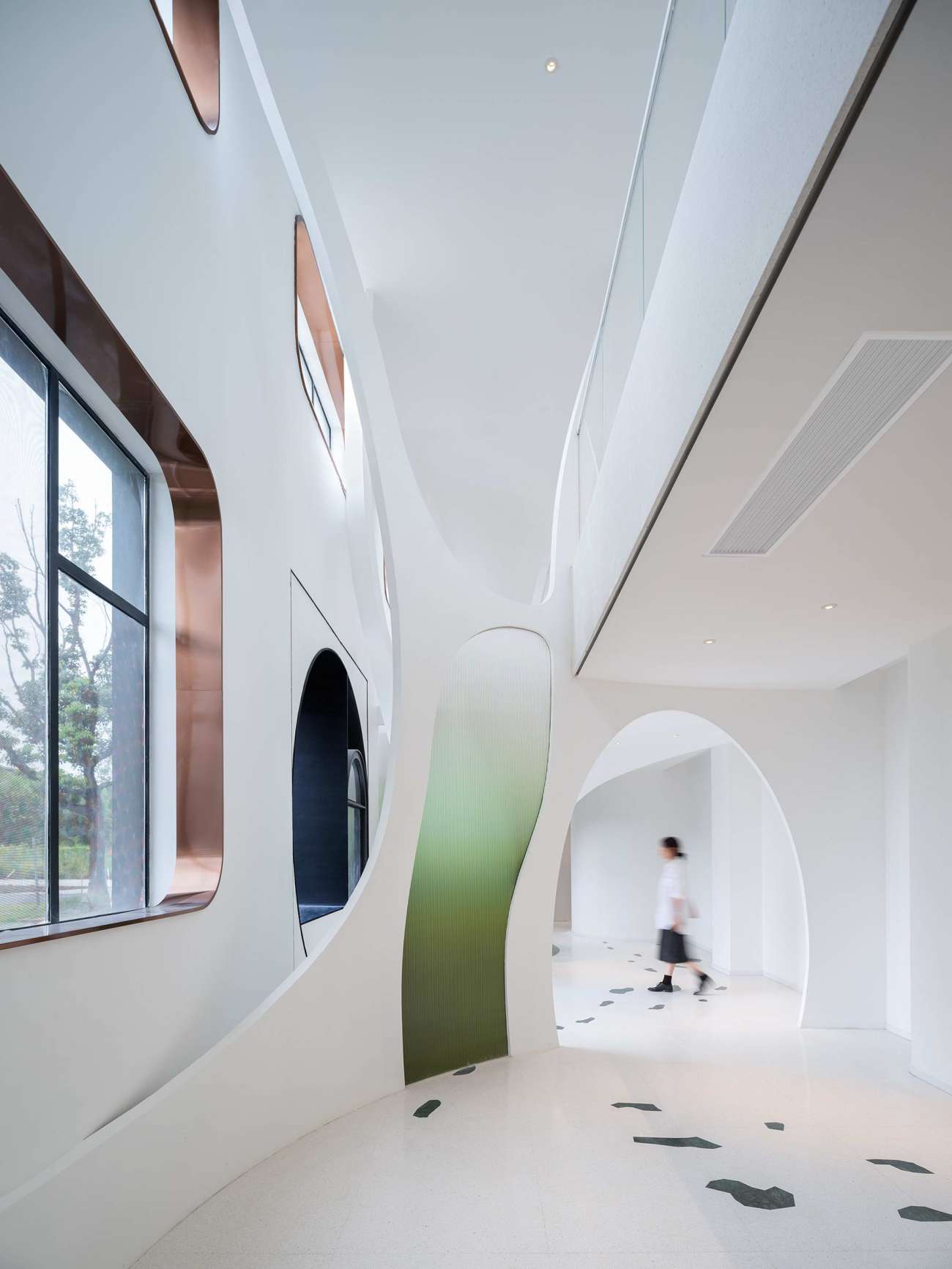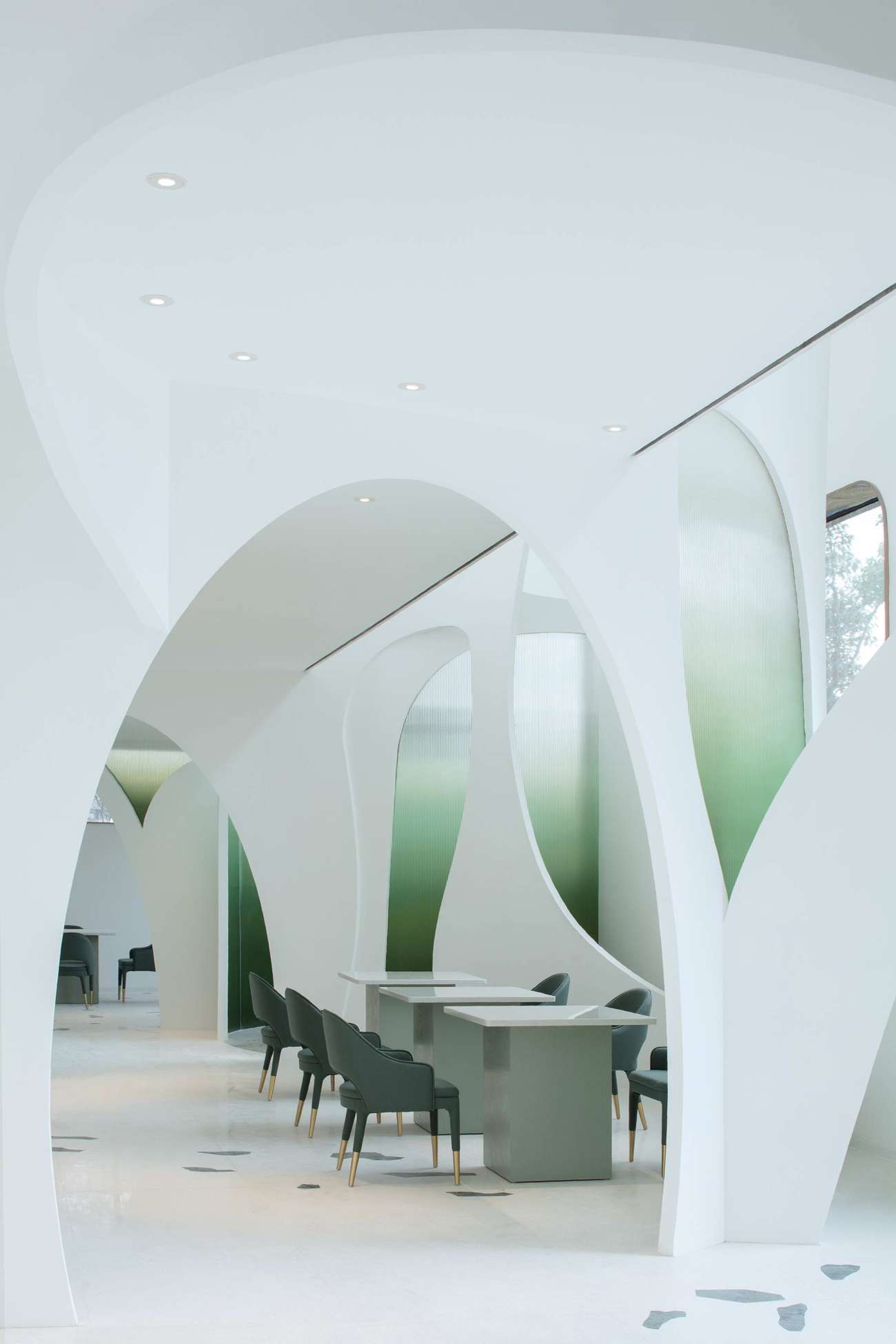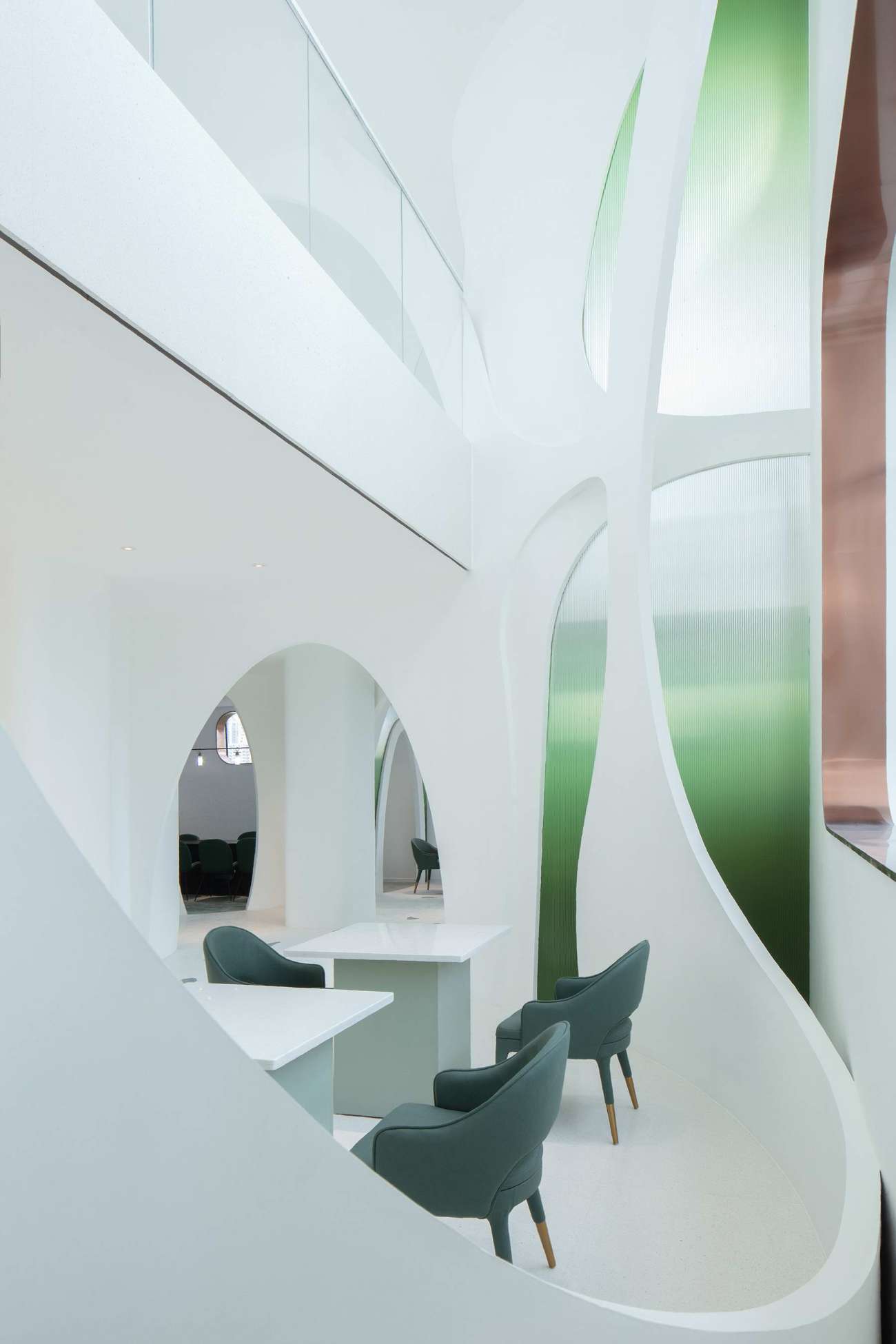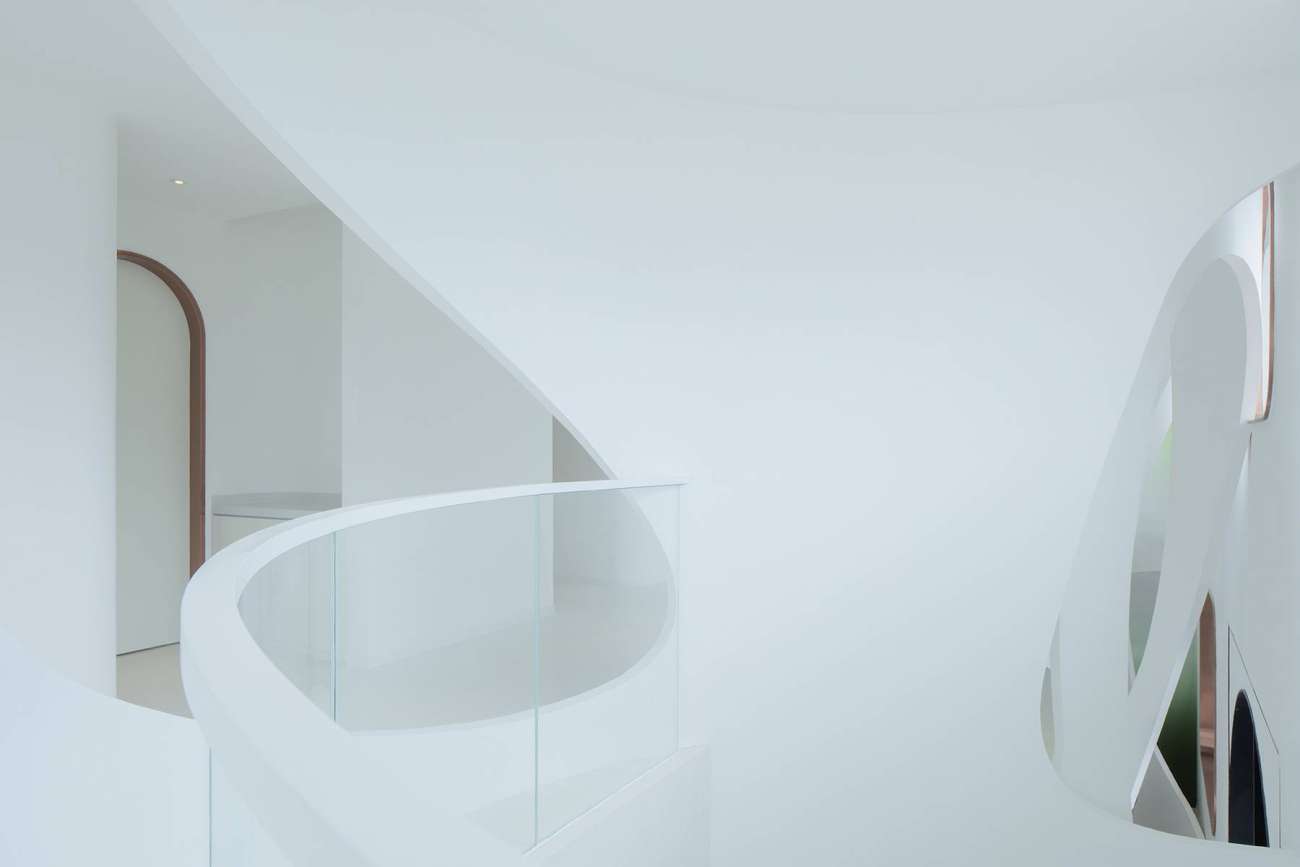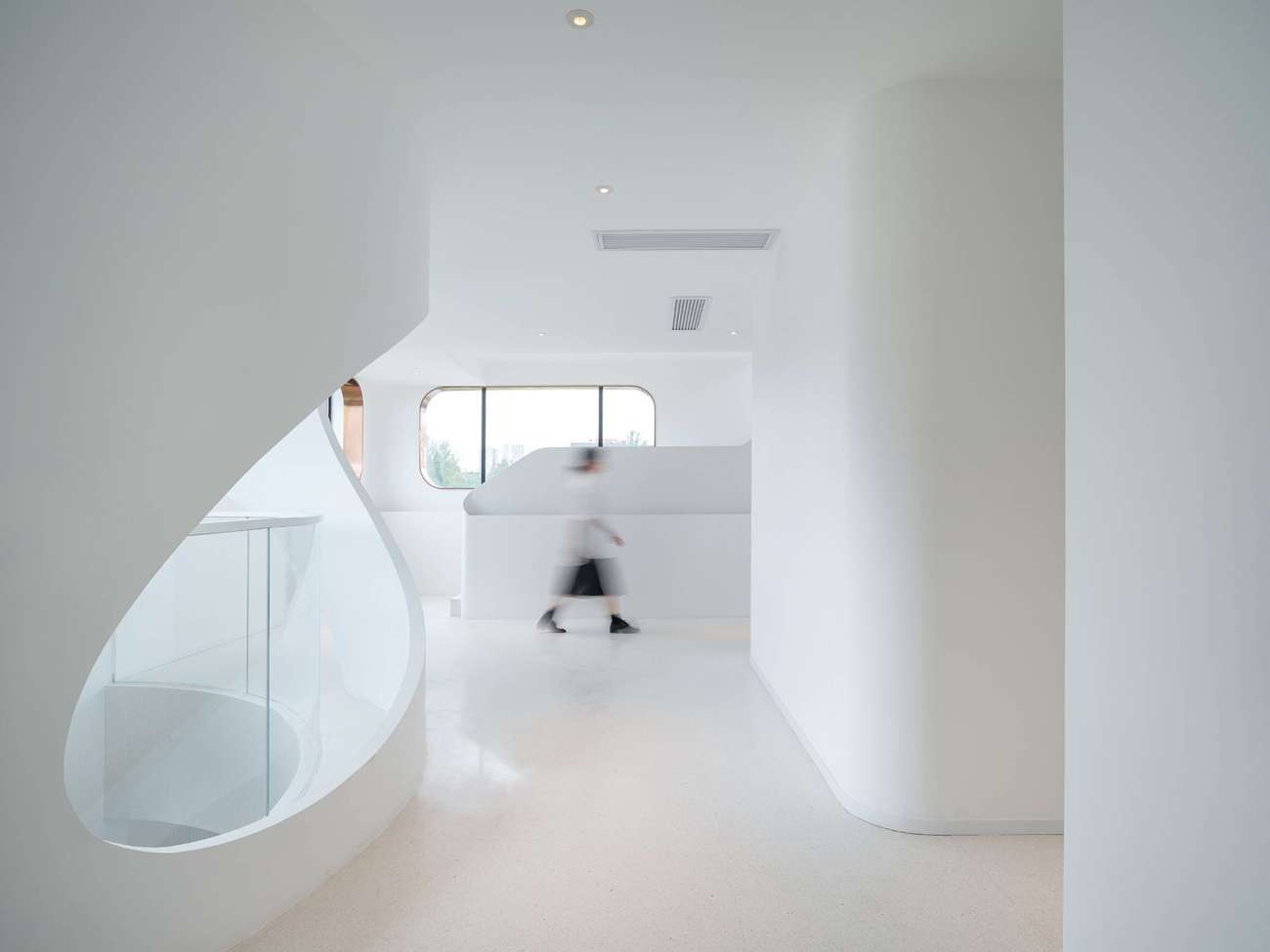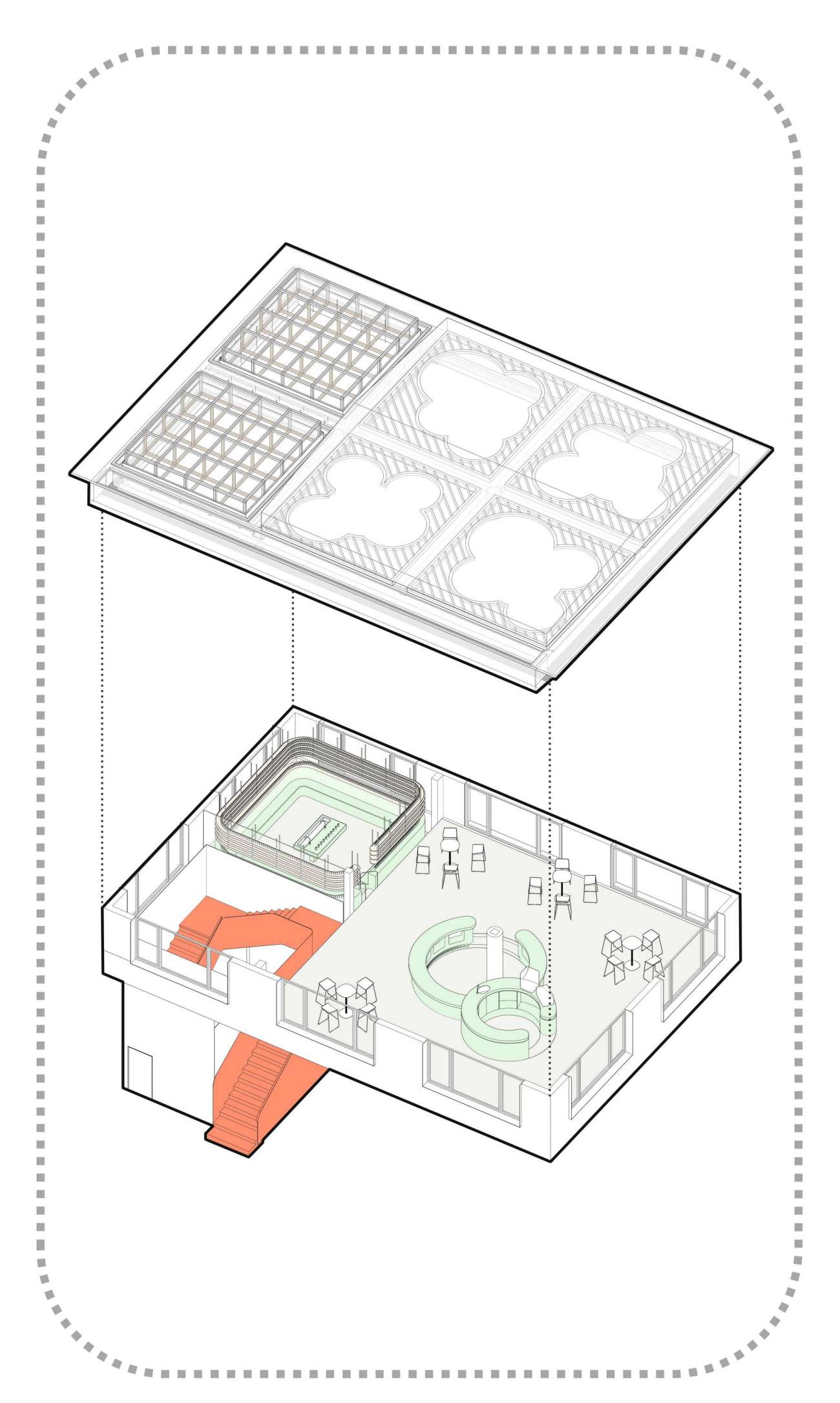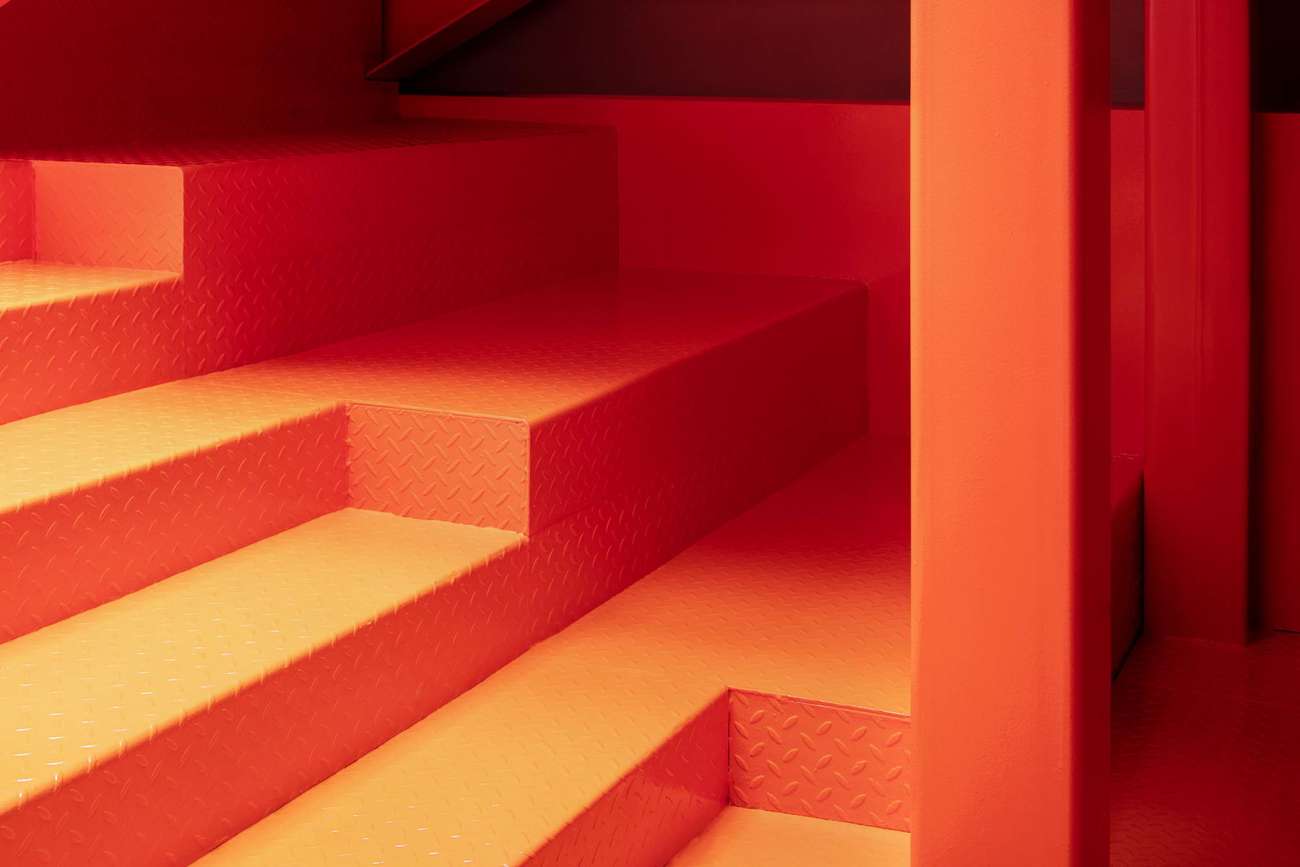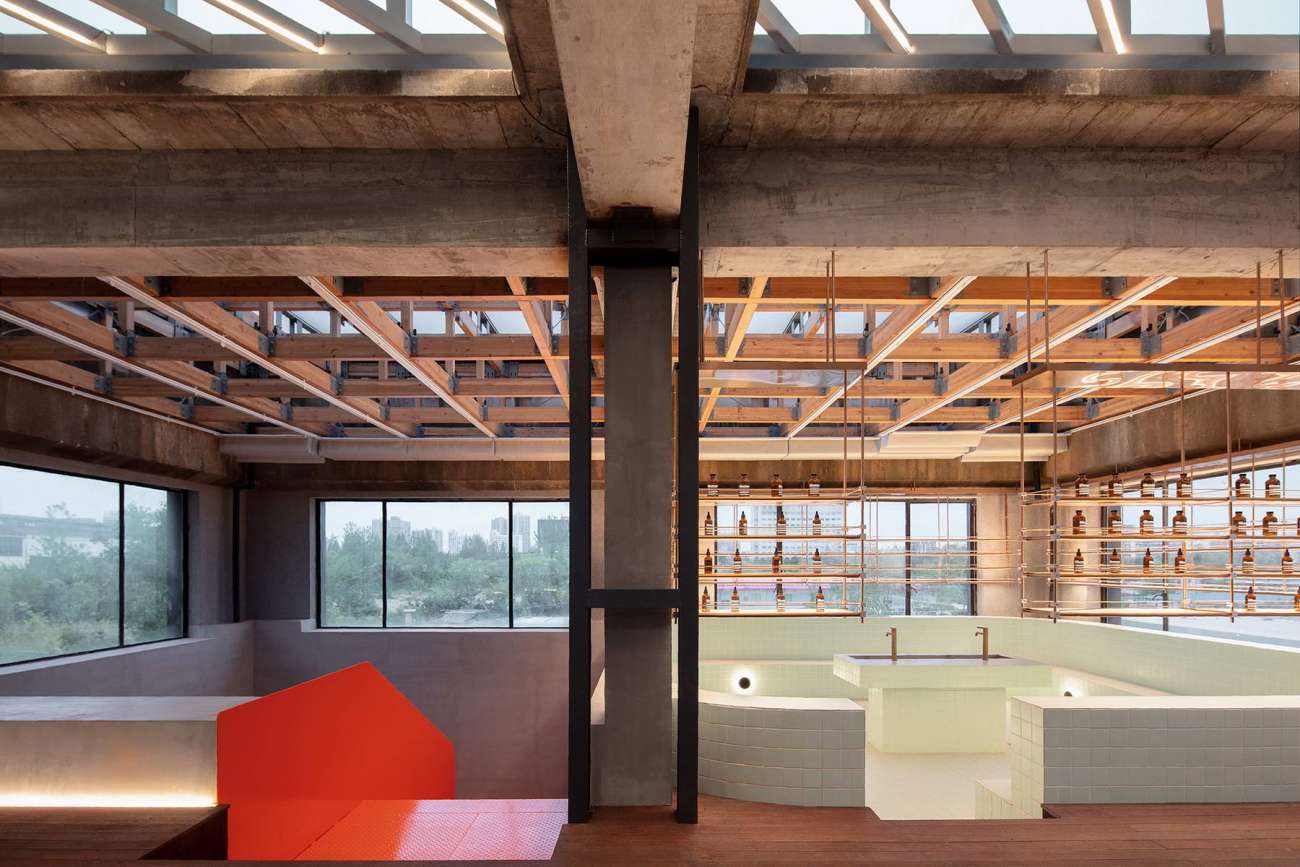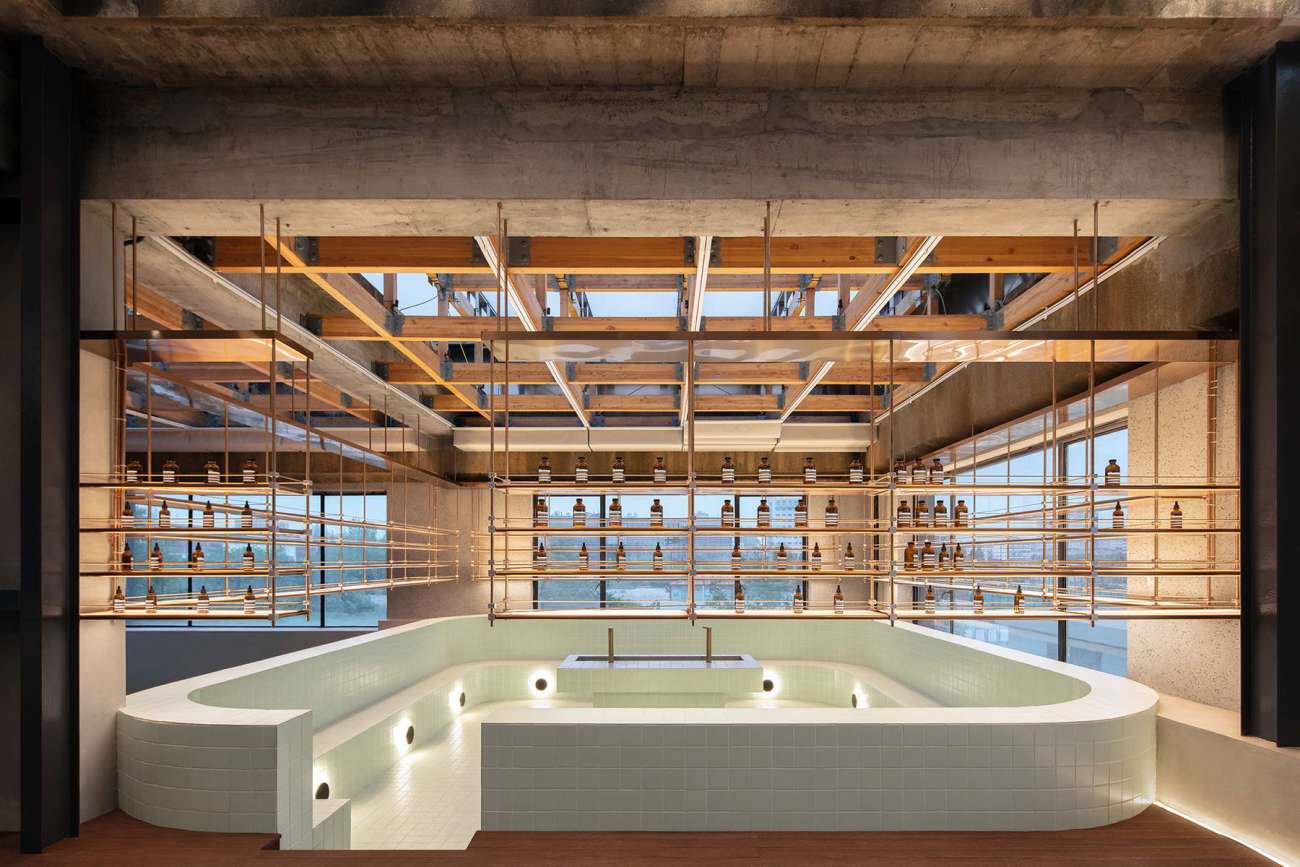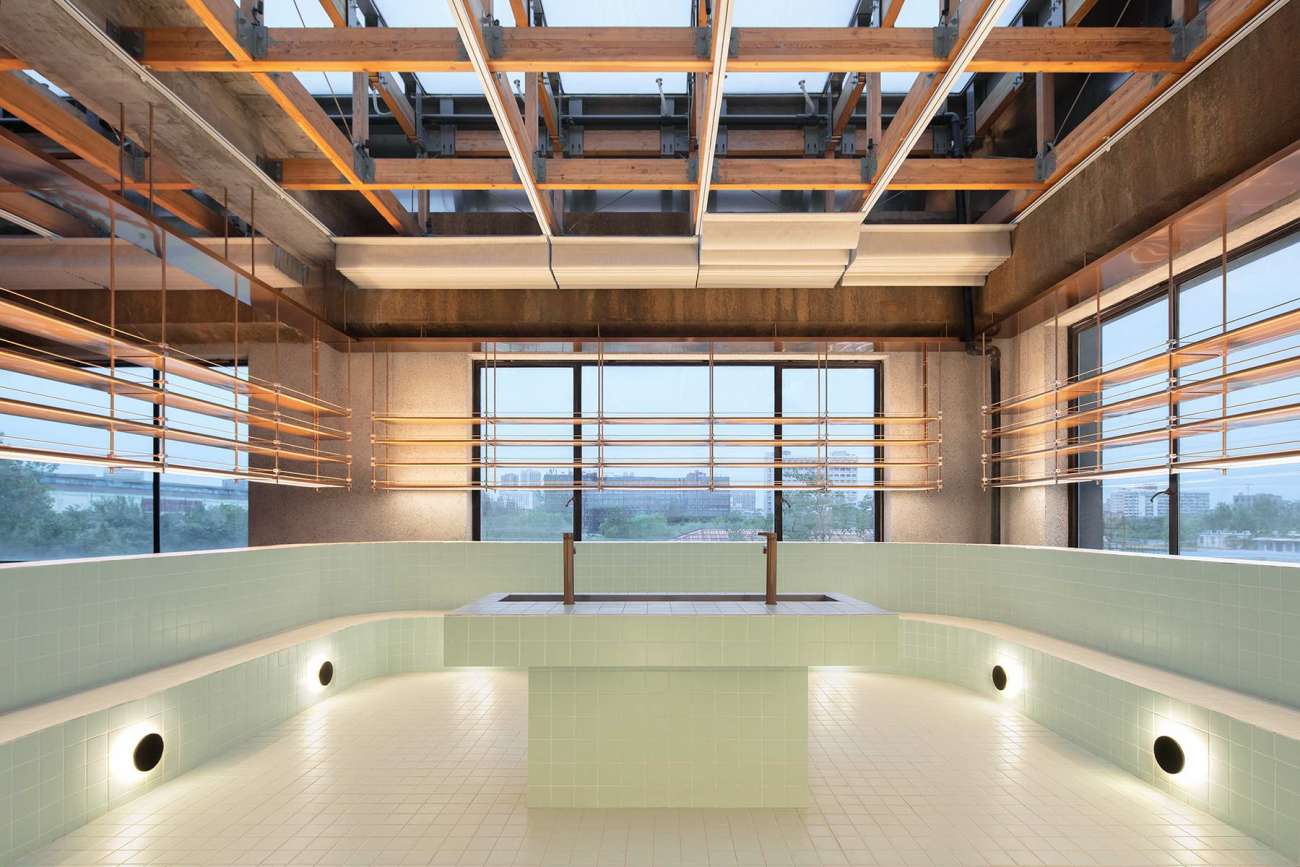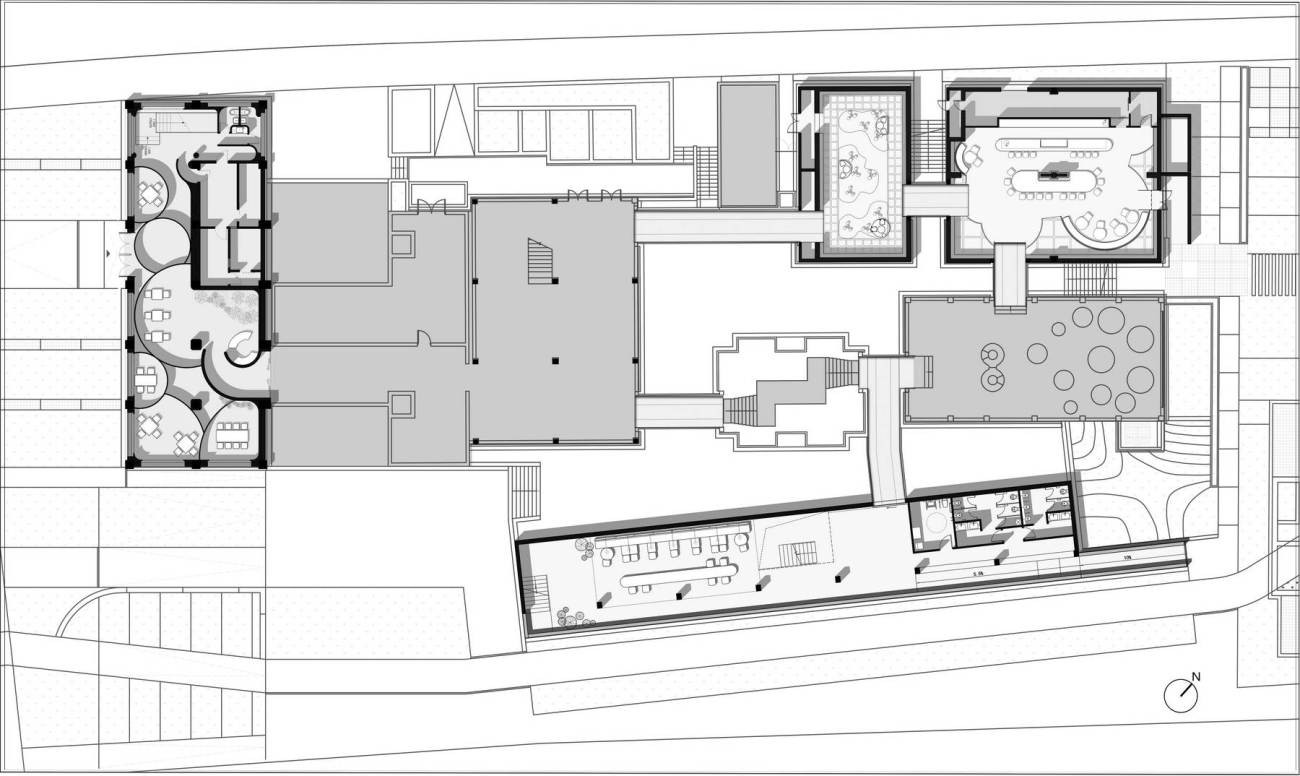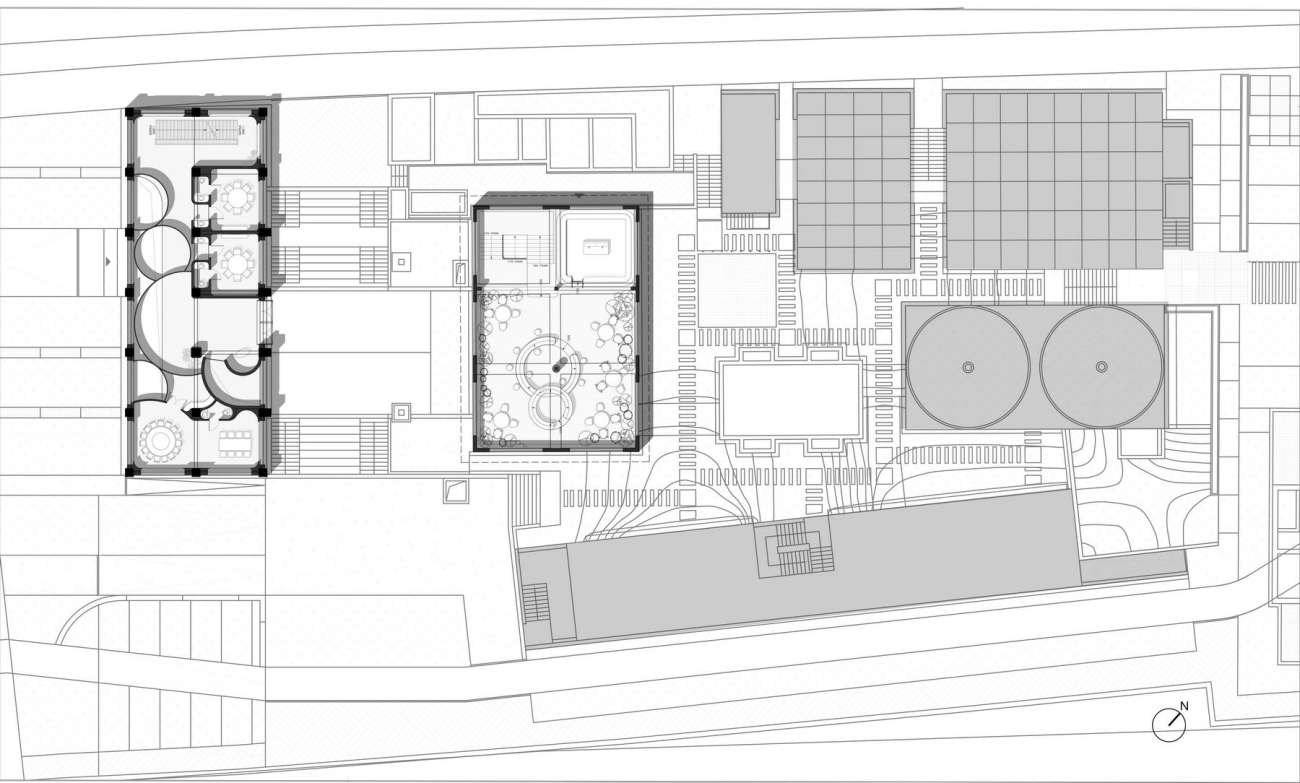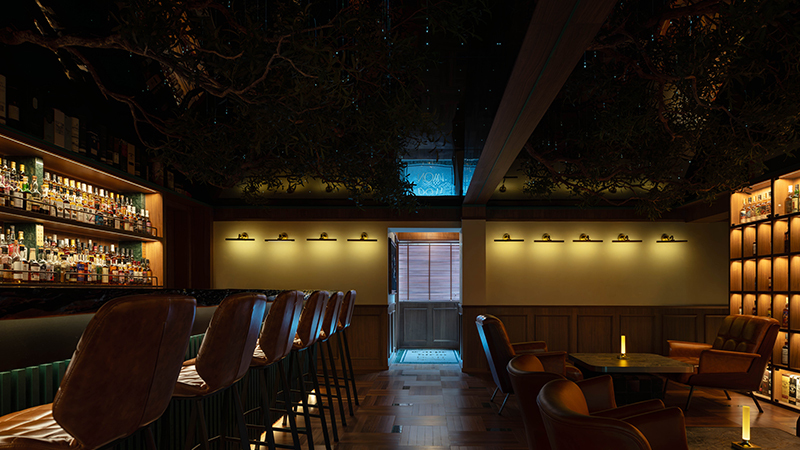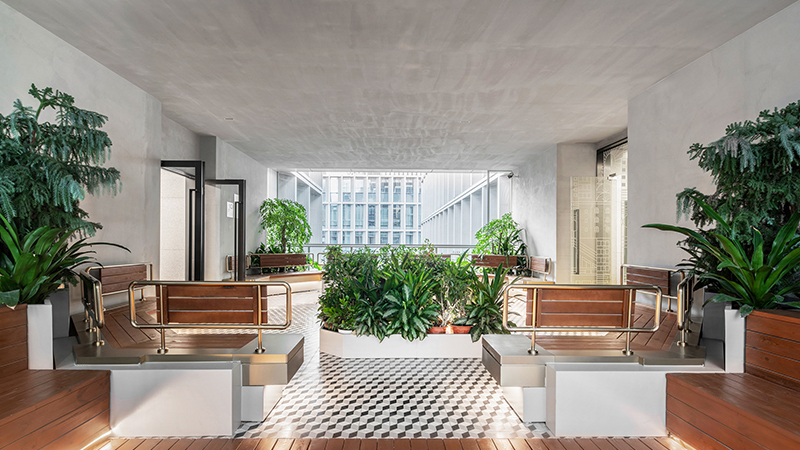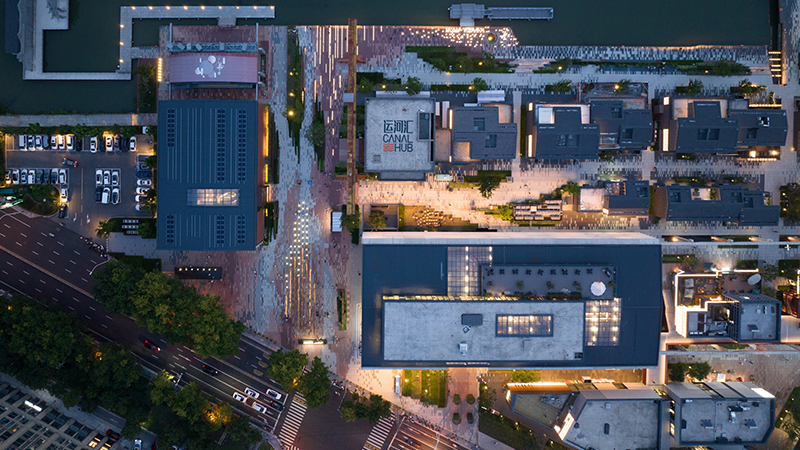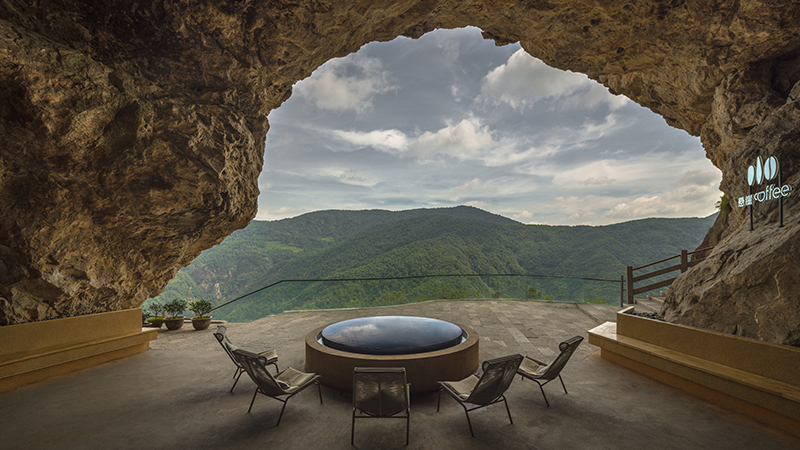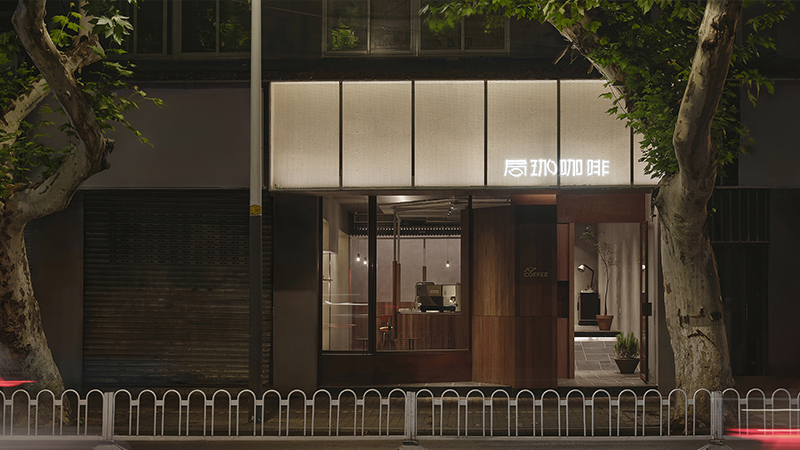杨浦滨江5.5公里 Yangpu Riverside 5.5km
上海杨浦滨江是指杨浦区从西面的秦皇岛路至黎平路、绵延5.5公里沿黄浦江的滨江带。杨浦滨江是在世界范围内工业遗存最大、也是保护较好的区域之一。
Shanghai Yangpu Riverside development stretches 5.5 kilometers long from Qinhuangdao Road to Liping Road at the west of Yangpu District. It is one of the largest and well-preserved industrial heritage worldwide.
20世纪40年代以前,杨树浦路上汇聚了上海机器制造局(建于1882年)、瑞记纱厂(建于1895年)、杨树浦水厂(建于1881年)、上海制皂厂(始建于1923年)等不同门类的工业企业三百多家,几乎涵盖了所有近代工业形态,成为近代中国工业的集聚地。
Before the 1940s, Shanghai Machinery Manufacturing Bureau (founded in 1882), Ruiji Spinning Factory (founded in 1895), Yangshupu Water Factory (founded in 1881) and Shanghai Soap Factory (founded in 1923) gathered on Yangshupu Road among the others. There were total of more than 300 industrial enterprises in the area from different sectors, covering almost all modern industries, and became the birth place of modern Chinese industry.
自20世纪90年代以来,随着上海的发展和城市的更新,在产业和城市空间的重构中,杨浦滨江成为上海城市滨水空间转型的重要地区。到了2017年,在市规局的协调下,杨浦滨江南段的一系列工业遗存改造开始全面启动。2019年秋日,随着“上海城市空间艺术季”的开幕,杨浦滨江南段5.5公里滨水公共空间全线贯通开放。
Since the 1990s, with Shanghai's development and urban renewal, Yangpu Riverside has become an important area for the transformation of Shanghai's urban waterfront space. In 2017, under the coordination of the Municipal Planning Bureau, the redevelopment of a series of industrial relics in the southern section of Yangpu Binjiang began. Fall 2019, with the opening of the "Shanghai Urban Space Art Season", the 5.5-kilometer waterfront public space in the southern section of Yangpu Riverside was fully open to the public.
△ 历史上的杨树浦工业区。Yangshupu Industrial Zone in history.
上海制皂厂前身
The predecessor of Shanghai Soap Factory
上海制皂厂创建于1923年,坐落于杨浦区临近江边的杨树浦路,原为英国联合利华有限公司在杨树浦建立的英商中国肥皂有限公司,曾是远东第一制皂厂。蜂花、固本、扇牌、白丽等家喻户晓的老品牌,都从这里走出,走进几代人的生活。
Founded in 1923, Shanghai Soap Factory is located on Yangshupu Road near the Huangpu river. It was originally known as the British Chinese Soap Factory, set up by the British Unilever Co. in Yangshupu as the first soap factory in the Far East. Many Chinese household brands such as Bee Flower, Guben, Shanpai, Baili etc. have all been made here and loved by generations.
△1925年的英商中国肥皂有限公司 British Chinese Soap Co., Ltd. In 1925.
△ 当年主要生产过程的场景记录Photo record of the production scene.
皂主题空间叙事线的设定
The narrative of soap themed space
此次改造项目位于于原上海制皂厂生产辅助区,南临黄浦江,由陆域景观与水域码头组成。陆域部分的西侧原为生产区与辅助区,设计以原始墙基为线索,砌筑红砖矮墙,还原历史空间格局,形成半开半合的庭院;同时通过浮起的钢栈道连通各处,达到移步换景的效果。东侧部分由原生产车间中压水解楼及污水净化池(调节池、格栅池、生物转盘池、气浮池、次氯酸钠池、观测楼)组成。
This renovation project is set on the production auxiliary area of the former Soap Factory, south facing to the Huangpu River, with adjacent landscape and water wharf. The west side of project site was originally the production area and the auxiliary area. The design takes the original wall foundation as a clue and builds a low red brick wall to restore the historical space pattern and form a semi open courtyard. At the same time, it is connected by a floating steel plank road to achieve the changing sceneries while you walk in the project site. The east part consists of the hydrolysis building and the sewage purification pool.
根据早期的相关城市规划,上海制皂厂的原有水池归入被拆除行列,负责建筑改造与景观设计的#致正建筑工作室#极力保留了这些构筑物,通过增加水池之间管道和上人景观屋面重新确定了这些水池的再利用的方式。建筑改造之后呈现的空间骨骼有力,工业和科幻感对撞,路径设定完整并具电影场景感,是空间条件极具独特性和辨识度的工业遗存空间。
According to previous urban planning, the original pools of the Shanghai Soap Factory were classified to be demolished, thanks to # Atelier Z+ #, the architect in charge tried their best to preserve the original structures and installed a new landscape roof that redefines the way how these pools are being reused. After the renovation, the original industrial relics were given a new look that combines with retro and sci-fi that is unique and recognizable.
△ 建筑设计改造之后的现场状况 Design status of the building after renovation
室内设计团队#蘑菇云设计工作室#围绕这个核心特质,注入以制皂主题为核心体验内容的叙事线,结合新媒体手法,完整呈现了制皂主题的魔幻意象室内空间,穿越皂厂历史和当下的时间场景,成为杨浦滨江岸线深受欢迎的公众活动空间。
The interior design team #Supercloud Studio# focused on ‘Soap’ as the main theme of the design, introduced a narrative of soap making as the journey that visitors are going to experience, and combined new media forms to the interior space to present a chanting theme of soap making, traversing the history and the present of the soap factory and made this project a popular public space along the Yangpu Riverside.
最终完成的室内改造空间被命名为“皂梦空间”,是策划,建筑,景观,室内,照明,展陈等共同协作完成的完整体验路径,制皂流程转化为富辨识度的物理空间,生动串联了咖啡,展示,餐饮,艺术事件,制皂实验室等一系列创意公共活动内容场景。
The renovated interior space is named as " Soap. Dream. Space", a collaborate works result from planning, architecture, landscape, interior, lighting, and exhibition design. The soap making process is transformed into physical spaces with public arts, display, as well as coffee and dinning in the once soap-making production space, and even taking part of the production in a laboratory.
制皂流程转化为空间体验
Turn the soap making process into a spatial experience
在自然中采集的制皂原料,经历一系列的工艺流程后,成为一块皂,使用后又归于大地和河流中。我们尝试用空间形式表达这个线性叙事流程。
The raw materials were collected from nature, after going through a series of procedures, become a bar of soap, and returned to the nature after use. We try to express this flow in a spatial form.
我们选择了一系列制皂工艺流程的动词,命名了一系列的连续行进空间:注入---混合---萃取---呈现---回归---泡沫,被动式的观看路径反过来激起了观者对场景内容的好奇心和关注度。五个长短不一2.4米直径的钢制圆筒,联接不同的分镜头空间,每个空间各具鲜明的主题预设场景。圆管除了承载关键的转场功能,也被植入动态可变视觉装置,成为流程的关节空间。
We chose the significant procedures from the soap-making process, and named the interior spaces after them: injecting – mixing – extracting – presenting – returning – foaming. It stimulates the curiosity of the visitors who walk through the interior spaces which connected by five steel pipes with diameters of 2.4 meters and various of lengths, and each space has its own distinct theme. Additionally, the circular tubes are also key visual elements, with some of them embedded with interactive lighting devices that turns it into key transitioning space between the scenes.
△ 皂厂空间爆炸图,叙事性的流程体验设定。Exploded diagram with the space narratives
第一幕:植觉和注入 ----- 恣意蔓生的丛林,隐秘的开关,被水流冲入不可知的前方
Act 1: Awakening and Infusion ------ Sprawling vegetation washed into an unknow space through hidden entry
皂字拆开,为“”白七“”,白七咖啡从江边的半户外下沉空间开始,这也是“皂梦空间”的起点。设想中是枝蔓丛生的野生树林环境,被选出的皂荚植物和原料(植觉),被处理后进入输送管道和生产车间中(注入)。
The Chinese character ‘zao’ as soap disassembled, makes "Bai" and "Qi". Baiqi Café begins from the semi-outdoor sunken space by the river, which is also the starting point of "Soap Dream Space". A natural environment with overgrown vegetations. Raw materials are sent into the pipeline for production, this marks the beginning of our journey - the Injection.
△ 吹泡泡的小女孩雕塑,吸引很多人在此到访合影,屋顶层露台可近眺黄浦江 Sculpture of a little girl with soap bubbles.
△ 白七咖啡的半户外下沉空间 Sunken space of BaiQi Cafe.
△ 生长中的植物,会逐渐“野生化” 白七咖啡的半户外空间。
Growing plants will gradually "Wilder" the semi-outdoor space of white seven coffee.
△ 隐秘的开关联动,“注入”之前的场景。hidden entry of BaiQi Cafe
△ 管道设置为交互地面屏视觉场景,进入时的动态画面感。Hidden entry of BaiQi Cafe. Interactive floor installation.
△ 夜晚场景,进入时的探秘感受。Hidden entry of BaiQi Cafe. Interactive floor installation.
△ 进入后回望入口,墙面反射面按照斐波那契数列设置,画面被再次叠加和反转。Inside the interactive entry tube.
△ 管内和管外的庭院交界处。Intersection of hidden entry and the outside world.
△ 墙面反射面角度看到的地面屏内容,超现实的戏剧张力。Photographed by Xiazhi
△ 可变视觉的设置为空间带来了随时切换情绪及场景的可能性。Interactive floor and scenes of different moods.
第二幕:混合和萃取 ----一些天然物质配方提纯的过程,被再次凝视
Act 2: Mixing and Extracting ----- A process of purification
制作手工皂的过程往往会带来充满惊喜的时刻———透明澄清的油在碱液的作用下慢慢变得粘稠,伴随着颜色的丰富变化,入模后的等待,脱模,变成一块剔透美丽的透明皂。白七咖啡的空间配方,试图还原这一多少带着魔法体验的提纯过程。
The process of soap making is full of surprises - clear oil slowly mixed with chemicals and became viscous, its color changed with difference ingredients, then put into the mold, solidate, turn into a beautiful bar of soap. The spatial formula of Baiqi Coffee attempts to restore this purification process with a somewhat magical experience.
△ 透明皂中捕捉到的绚丽色彩。 Colors of translucent soap bars
△ 在暗空间回望“注入”的入口管道。Looking back to the entrance.
△ “混合”是一个混沌的暗空间,是原皂厂的搅拌池。日本著名艺术家川添善行设计的大型艺术品《一年/一万年》陈设于此。融入泡沫元素的艺术品,形似钟乳石,是2019年上海城市空间艺术季永久性展品之一。
"Mixing" is where the original stirring pool was, and now turned into a tranquil display room. The large-scale artwork "One Year/ Ten Thousand Years" designed by the famous Japanese artist Yoshiyuki Kawazoe is displayed here. The artwork with foam elements, shaped like stalactites, is one of the permanent exhibits in the 2019 Shanghai Urban Space Art Season.
△ 这段管道,连接了暗空间(混合)和白七咖啡(萃取)。Tube connecting display space (Mixing) and Café (Extracting).
△ 白七咖啡(萃取)内部空间爆炸图 Exploded diagram of Baiqi Café Interior
△ 白七咖啡(萃取)的设计概念,来自透明皂的色彩感,玻璃砖材质和照明调光设置还原了这一意象。Design concept of Baiqi Coffee (extraction). The colors inspired by translucent soap bars. Achieved with glass bricks and color lighting.
△ 白七咖啡(萃取)内部,玻璃砖材质和RGB调光模式的混合状态。Baiqi café (Extraction) interior.
△ 管道和零件组合成皂厂空间装置。Industrial elements in the space.
△ 透明亚克力卡座。Transparent acrylic coffee cassette.
△ 白七咖啡(萃取)的吧台酒架,照明色彩随场景设置变化。Bar shelf at Baiqi café (Extraction) with color lighting.
第三幕:皂荚岛 ----- 一块放大的自然切片,皂荚树长成的岛
Act III: Acacia Island ----- Island of acacia trees, a slice of nature
白七咖啡馆连接的另一处,是相对独立的皂荚岛展区。各种不同年代出产的肥皂,包裹在一个个肥皂泡型的透明展示球内,“长”在高大的绿色植物丛中。
The other side Baiqi Cafe is the Acacia Island exhibition area. Soaps produced in different eras are placed in translucent soap bubble-shaped display shelves "grown" among the green plants.
△ 皂荚岛(呈现)空间爆炸图 Acacia Island (Exhibition)Exploded Diagram
△ 皂荚岛效果图,下方是深度达1.5 米的原净化水池,透明的玻璃地面强调了地下空间。Acacia Island Interior Rendering. Below the floor is the original 1.5 meter deep purifying pool, now covered with translucent glass floor.
△ 从白七咖啡通过管道望向皂荚岛。Looking through the tube, from Baiqi café to Acacia island.
△ 不同年代感的香皂,内置在透明的泡沫球里。Soap from different era on display at Acacia island.
△ 顶部木结构上方是Etfe膜结构,皂荚岛被充足的自然光笼罩。Above the wooden structure at the top is the ETFE membrane structure, and the Gleditsia island is shrouded in sufficient natural light.
△ “回归”管道装置效果图(麓米照明设计提供) Rendering of the ‘Returning‘ tube by Lumia Lab
△ 从展厅望向皂荚岛的管道,植入了照明装置“回归” ---- 麓米照明设计的螺旋形灯带和点射状灯点以相反行进方向交叠在一起,制造出时空的虚幻无垠感。Looking through the pipe from the exhibition hall to acacia island, the lighting installation - designed by Lumia Lab - "return" , with spiral lighting twirls to one direction and beam shaped light points to another, creating an illusion of moving space and time.
第四幕:花食-----在巨大花瓣的光影中,带入花食的世界
Act 4: Dine in the Flowers ----- Dine with the light and shadow of petals
盛开花朵的样貌,在现实世界中有一种散落、变化、消逝中的美。花也是香皂中常用的原材料,转瞬即逝的花期和香气以皂的形式固存下来,传递着瞬间自身所感受到的情感。
The beauty of flower is transient. It blooms, scatter and disappears. Flowers are also used as raw materials in soaps. The fleeting flowering period and aroma are preserved in the form of soap, conveying the transient beauty into something we can hold on to.
蜂花檀香皂是上海制皂厂最受喜欢的经典品牌之一,首创于1928年,以天然檀香木为基调,隐隐散逸着茉莉花香和柑橘果香。花食餐厅的概念,来自花瓣在绽放时刻中的姿态,巨大抽象的花瓣包裹、交叠、穿插在两层高的空间中,围合出独特的光影和氛围。
Bee Flower sandalwood scented soap is one of the most popular classic by Shanghai Soap Factory. It was first created in 1928, based on natural sandalwood, with a touch of jasmine and citrus note. The concept of the dine in flower restaurant comes from the blooming petals. Enlarged abstract petals wrapping and overlapping in the double height space, creating unique light, shadow and atmosphere.
△ 花食空间爆炸图 Exploded diagram of Dine in the Flowers
△ 抽象的巨大花瓣的形态。Abstract flower petals.
△ 通高的挑空入口空间,人的视觉被拉伸出超现实的场景感。Double height entrance space.
△ 地面里嵌入大颗的绿色天然石块,隐现的路径和引导。Floor embedded marble patterns.
△ 花瓣的交叠和围合。Intersecting petals.
△ 超现实的内卷空间。Curved walls
△ 花瓣的包裹和放空。Circulation space
第五幕:制皂实验室 ----- 在空游泳池中,亲手制皂
Act 5: Soap Lab ----- Handmade soap in an empty swimming pool
制皂的程序,是提炼又提炼的过程,繁复、琐碎、专注,一如所有心爱之物之铸造。从橙色钢梯盘旋而上,皂梦空间的屋顶空间,一个亲手体验制皂的实验室,一个淡绿的空泳池,一段亲手制皂的时光。
The process of making soap is a process of refining and refining, delicate, trivial, and requires a lot of focus. Circling up from the orange steel ladder, the roof space of Soap Dream Space, a laboratory for hands-on experience of soap making, in a light green empty swimming pool.
△ 制皂实验室空间爆炸图 Exploded diagram of the soap making laboratory
△ 从橙色钢梯拾级而上的期待感。Orange staircase.
△ 在空游泳池里亲手制皂。Making soap in the empty swimming pool.
“皂梦空间”,穿越一个个时空隧道,链接每一个关联空间,最终见证了皂梦的诞生。
In this project one travels through the tunnels of time and spaces, spaces of yangpu’s industrial past, linked to present, witnessing a story of industrialization.
项目图纸 Drawings
△ 一层平面图 Ground Floor Plan
△ 二层平面图 2nd Floor Plan
设计公司: 蘑菇云设计工作室
类型: 室内 工业遗存空间改造 咖啡 展示 线下体验空间 餐饮
地点:上海 杨浦滨江 平定路1号
业主:上海杨浦滨江投资开发有限公司 ,上海杨树浦文化创意产业有限公司 ,上海古好文化发展有限公司
面积:1450m2
项目年份:2020年9月
室内设计(蘑菇云设计工作室):徐迅君,杨育青,韩晓煜,崔强松,庞磊,孙文浩,张旭东,季杰,齐诗园,祁飞,俞浩
照明设计(Lumia Lab照明):庞磊
装置设计:庞磊、徐迅君
机电施工图设计:上海峙盛建筑装饰设计有限公司
建筑设计:致正建筑工作室 CONCOM-集良建筑
景观设计:致正建筑工作室 诺恳景观 CONCOM-集良建筑
展览设计:上海现代国际展览有限公司
项目策划(古好文化):席小卷
工程承建团队:上海维方建筑装饰工程有限公司 上海恒盈建设发展有限公司
材料: 水泥漆 无机水磨石 玻璃砖 渐变夹膜玻璃 耐候钢板
摄影师:夏至 田方方
Interior Design: Supercloud Studio
Type: Interior Design,Urban revival of the industrial relics, Café, Display space, Offline experience store, Restaurent
Location: No. 1, Pingding Road,Yangpu Riverside, Shanghai
Client: Shanghai Yangpu Binjiang Investment Development Co., Ltd,Shanghai Yangshupu cultural and Creative Industry Co., Ltd,Shanghai guhao Culture Development Co., Ltd,
Construction Area:1450 m2
Year: 2019/06-2020/09
Interior design(Supercloud studio): Xu Xunxun, Yang Yuqing,Han Xiaoyu, Cui Qiangsong, Lei Pang Sun Wenhao, Zhang Xudong, Ji Jie,Yu Hao,Qi Fei
Lighting Design(LUMIA Lab): Lei Pang
Installation:Lei Pang , Xu Xunjun
Electromechanical construction:Z&S studio
Architecture Design: Atelier Z+,CONCOM Studio
Landscape Design: Atelier Z+,Nuo Keng Landscape Studio,CONCOM Studio
Exhibition Design:SHANGHAI MODERN INTERNATIONAL EXHIBITION CO.,LTD.
Project planning (Guhao Culture): Xi Xiaojuan
Construction team: Shanghai Weifang Constrution Co.ltd;Shanghai hengying Construction Development Co., Ltd
Materials: Cement paint, inorganic terrazzo, glass brick, graded laminated glass, weather resistant steel plate
Photographer: Xia Zhi ,Tian Fangfang
更新日期:2022-04-21 18:10:35
非常感谢 蘑菇云设计工作室 带来的精彩项目, 查阅更多Appreciations towards Supercloud Studio for sharing wonderful work on hhlloo. Click to see more works!
